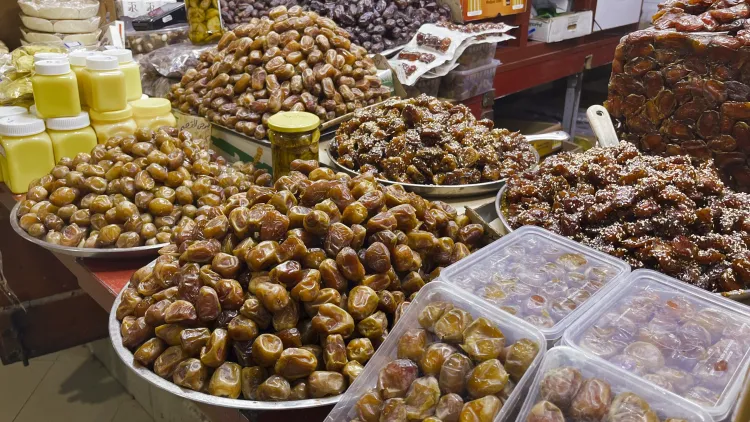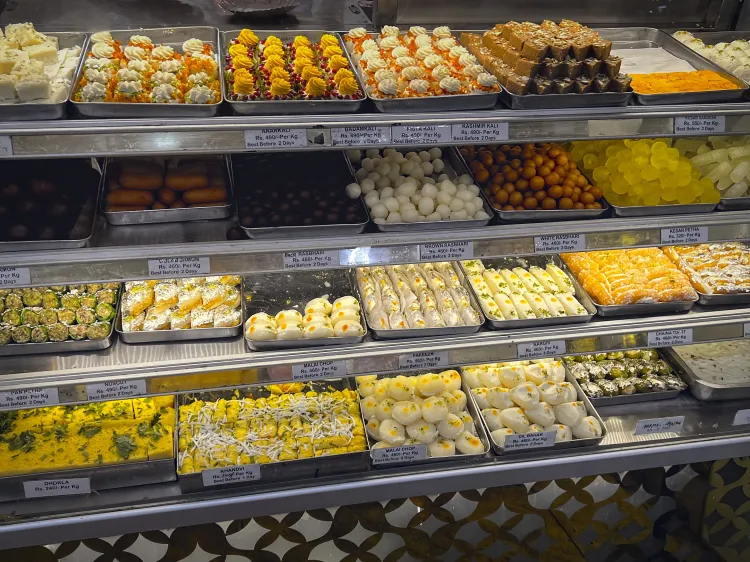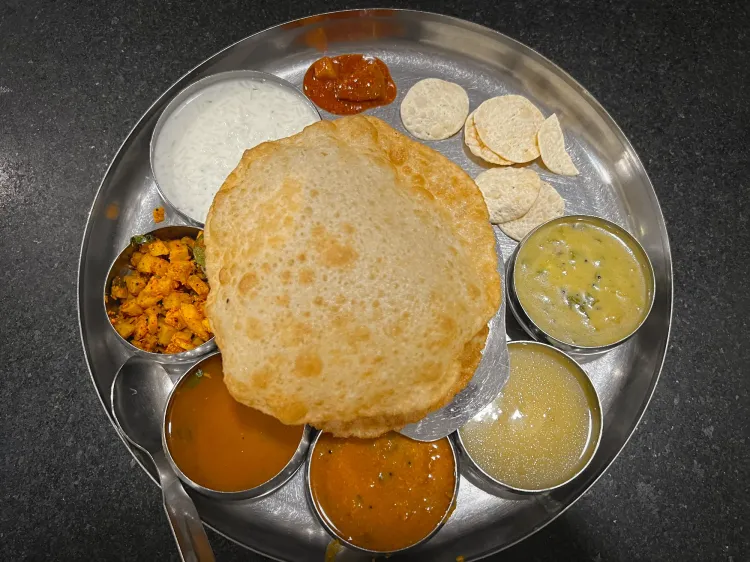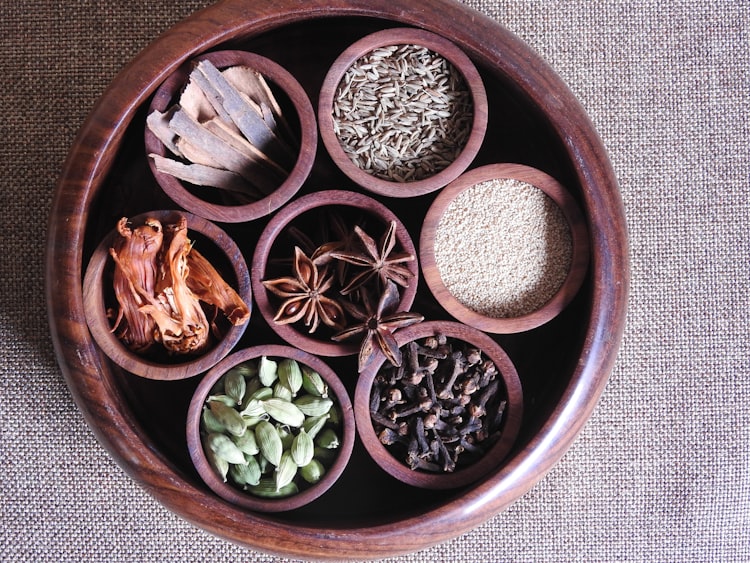Thai Gastronomy
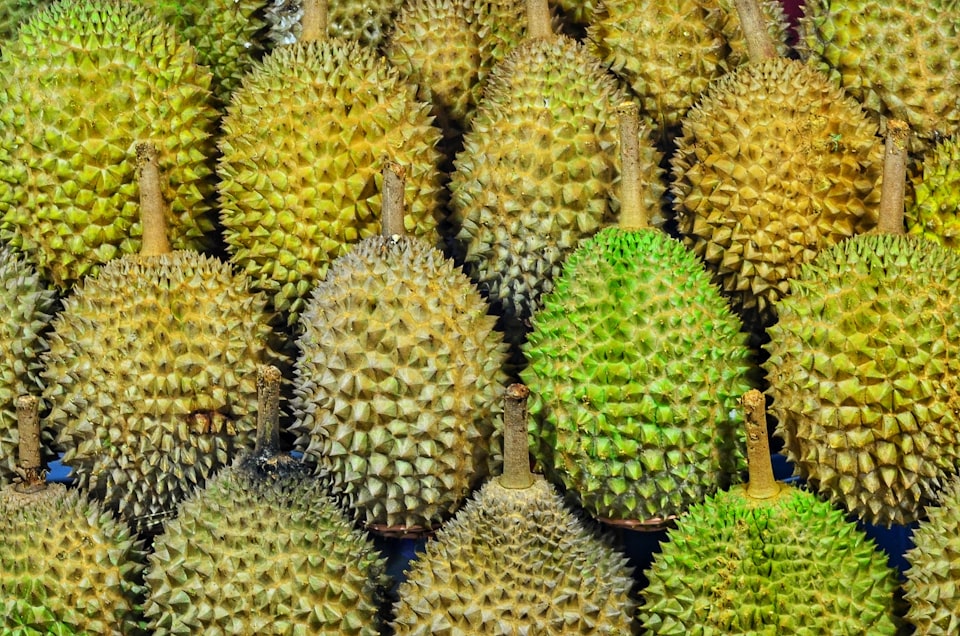
Thai gastronomy is renowned for its bold, complex and spicy flavors, as well as its extensive use of fresh herbs and spices. Thai cuisine is especially lauded and characterized by its consistent balance of the five fundamental tastes: sweet, sour, salty, bitter, and umami, which are skillfully blended together in each dish.
Thai gastronomy has a wide range of dishes, from street food to royal cuisine. The country's specific initiatives to popularize and improve the Thai cuisine have culminated in a unique cultural phenomenon and done wonders for the culinary world at large. It is no surprise that Thai food today is so beloved and diverse.
Culture and Geography
History
Thai food is heavily influenced by the country's history and cultural diversity. Over the centuries, Thailand has been influenced by neighboring countries such as India, China, and Malaysia, as well as by European traders and colonizers.
One of the biggest influences on Thai food is Buddhism, which has shaped the country's culinary traditions and values. Buddhist teachings encourage the use of fresh and natural ingredients, and the avoidance of meat consumption during certain times of the year, leading to the development of vegetarian and vegan dishes in Thai cuisine.
Historically, Northeast Thailand was a part of Laos. Culturally, many people from this region relate closer to Laos than the rest of Thailand. The distinct foods from that region is therefore strongly influenced by Laotian cuisine.
The Indian influence on Thai food is evident in the use of spices and herbs, such as cumin, coriander, and turmeric, as well as the concept of curries. Chinese influence can be seen in the stir-frying technique and the use of noodles and dumplings, while the Malay influence is evident in the use of coconut milk and spices.
The European influence on Thai cuisine came during the colonial period, with the introduction of ingredients such as tomatoes, chili peppers, and potatoes. This led to the development of dishes such as Tom Yum soup, which is made with chilies and tomatoes, and Massaman curry, which uses potatoes and peanuts.
One of the most unique things about Thai gastronomy is that the Thai government has been actively promoting Thai cuisine as part of its efforts to promote the country's image and enhance its soft power on the global stage. This push to popularize Thai cuisine as a geopolitical move can be traced back to the 1990s, when the government launched the "Global Thai" campaign to promote Thai products and services, including food. The aim of the campaign was to position Thai cuisine as a world-class cuisine, on par with other global cuisines such as French, Italian, and Chinese. The Thai government believed that by promoting Thai cuisine, it could not only boost the country's image and reputation but also increase its exports and attract more tourists.
The government organized various events and competitions to create an impressive list of Thai dishes that could be promoted around the world. Years later, the government's push to popularize Thai cuisine seems to have been a successful strategy in enhancing the country's notoriety and promoting its image as a vibrant and culturally rich nation. Today, Thai cuisine is recognized and enjoyed around the world, with Thai restaurants and food products readily available in many countries.

Regions
Thai cuisine is incredibly diverse and varies greatly depending on the region of the country. The cuisine of Northern Thailand is heavily influenced by the neighboring countries of Laos and Myanmar, and features a lot of pork dishes. The cuisine of the Northeast, also known as Isaan, is a near copy of the cuisine of Laos, and is known for its use of chili peppers and sticky rice, as well as dishes such as som tam (papaya salad) and larb (minced meat salad).
Central Thai cuisine, which is based around Bangkok, is the most well-known and features a lot of curries. Southern Thai cuisine, which is influenced by Malaysian and Indian cuisine, is known for its spicy and sour flavors and use of seafood and turmeric. What makes the central region cuisine special is that it is home to royal cuisine. Cooking in the the royal palace involved elaborate meals made with complex techniques turning this cuisine into an art form more than just pure sustenance.
Southern Thai cooking has claimed most of the international hits from Thailand as it is the main tourist region of the country. In southern cuisine there is much more use of coconut milk in many dishes. The main Malaysian and Chinese influences are seen in the southern regions.
The geography and agriculture of each region plays a significant role in the cuisine of Thailand. The north, for example, has cooler temperatures and is known for its rice paddies and orchards, while the south has a tropical climate and is known for its seafood and coconut plantations.
Regions
Northern (Lanna)
Northeastern (Issan)
Central
Southern
Ingredients
Thai cuisine is renowned for its bold and complex flavors, which are created by the use of a wide variety of fresh ingredients, herbs, and spices. Here is an overview of the most commonly used ingredients in Thai cuisine:
Vegetables: Thai cuisine makes use of a wide variety of vegetables, including garlic, onions, shallots, lemongrass, ginger, and chilies. Other commonly used vegetables include eggplant, green beans, broccoli, cabbage, and mushrooms.
Meats/Fish: Meat and fish are commonly used in Thai cuisine, with chicken, pork, beef, and fish being the most popular. Seafood such as shrimp, squid, and mussels are also commonly used in dishes such as Tom Yum soup and Pad Thai. In addition, Thai cuisine makes use of organ meats such as liver and kidney in dishes like Larb.
Carbs: Rice is a staple ingredient in Thai cuisine and is often served alongside a variety of dishes. Noodles are also popular, with rice noodles being used in dishes like Pad Thai and egg noodles being used in soups. Additionally, Thai cuisine makes use of breads such as roti, which is a type of flatbread.
Herbs/Spices: Herbs and spices are integral to Thai cuisine, with lemongrass, kaffir lime leaves, Thai basil, galangal, and coriander being the most commonly used. Other commonly used spices include cumin, turmeric, and cardamom. Thai cuisine also makes use of a variety of chili peppers, ranging from mild to extremely hot, to add heat to dishes.
Condiments/Sauces: Condiments and sauces are used to add flavor and texture to Thai dishes. Fish sauce, soy sauce, and oyster sauce are commonly used as seasoning, while coconut milk and tamarind paste are used to add richness and tanginess to curries and soups. Additionally, chili paste, peanut sauce, and sweet chili sauce are popular dipping sauces.
Major Ingredients
Thai Basil
Lemongrass
Coconut Milk
Rice Noodles (and Rice)
International Highlights
Pad Thai
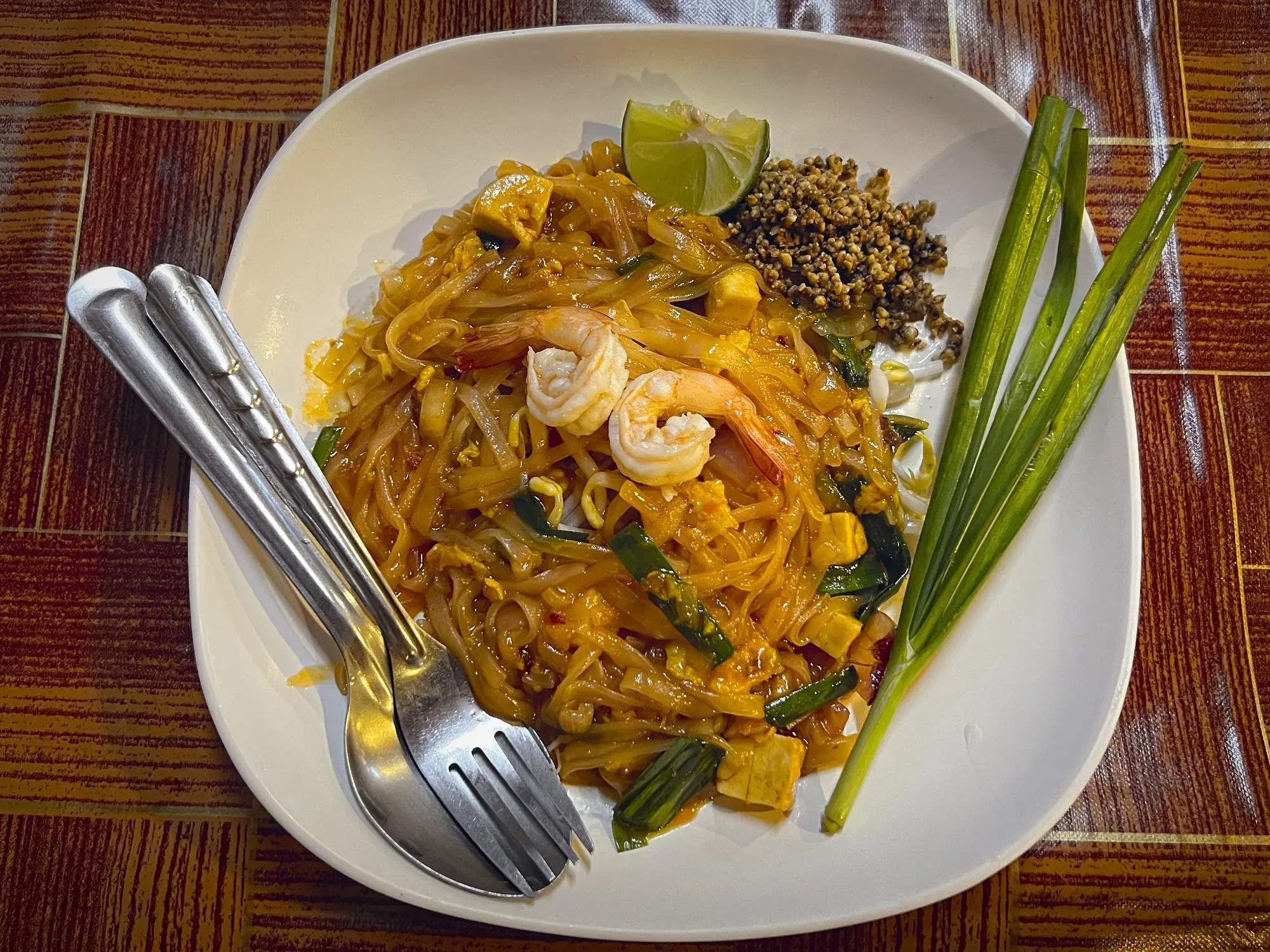
Thailand's most popular international hit is none other than Pad Thai. Pad Thai has a few disputed origin stories, but none really hold up as obvious truth. What can be said is that it is consistently ranked in the top 10 of the world's favorite dishes, it is the most famous national dish of Thailand, and it is delicious!
Pad Thai is a stir-fried noodle dish cooked quickly in a wok. Rice noodles are stir fried with eggs and chopped tofu, and then flavored with tamarind, fish sauce, shrimp paste / dried shrimp, garlic, shallots, chili pepper, and palm sugar. The stir fry is then topped with peanuts, bean sprouts, lime, and seafood or meat (often shrimp). Pad Thai can be made in so many different regional variations, but the most common themes of presentations are a sweeter, shrimp paste form or savory pork-based renditions with a bit of spice. No matter what style you try, Pad Thai provides a beautiful balance of salt, fat, sweet, and sour flavors to create one of humanity's favorite gastronomic creations.
Pad Kee Mao ("Drunken Noodles")
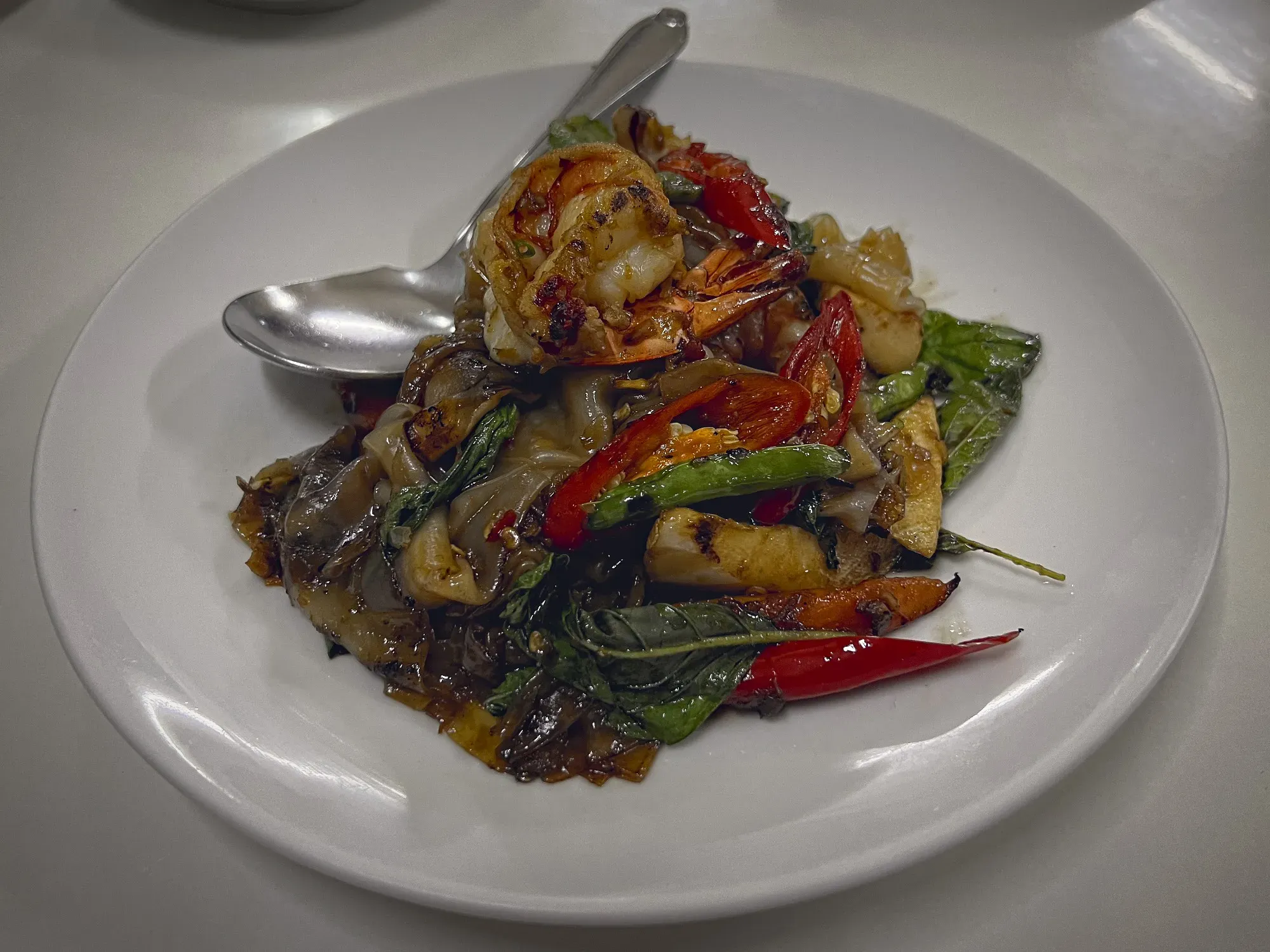
Drunken Noodles are another Thai stir-fry, but with broad rice noodles (kuai tiao sen yai). Drunken noodles involves stir frying these broad noodles with garlic, shallots, soy sauce, fish sauce, oyster sauce, peppercorn, chilies, and a meat (sometimes with eggs and shrimp paste as well). It is then topped with holy basil and kaffir lime leaves. Often the dish is made with a generous helping of chilies and is fairly spicy. Similar to pad thai, the dish is flexible and can be made with quite a bit of variation in meats and added vegetables.
Pad See Ew
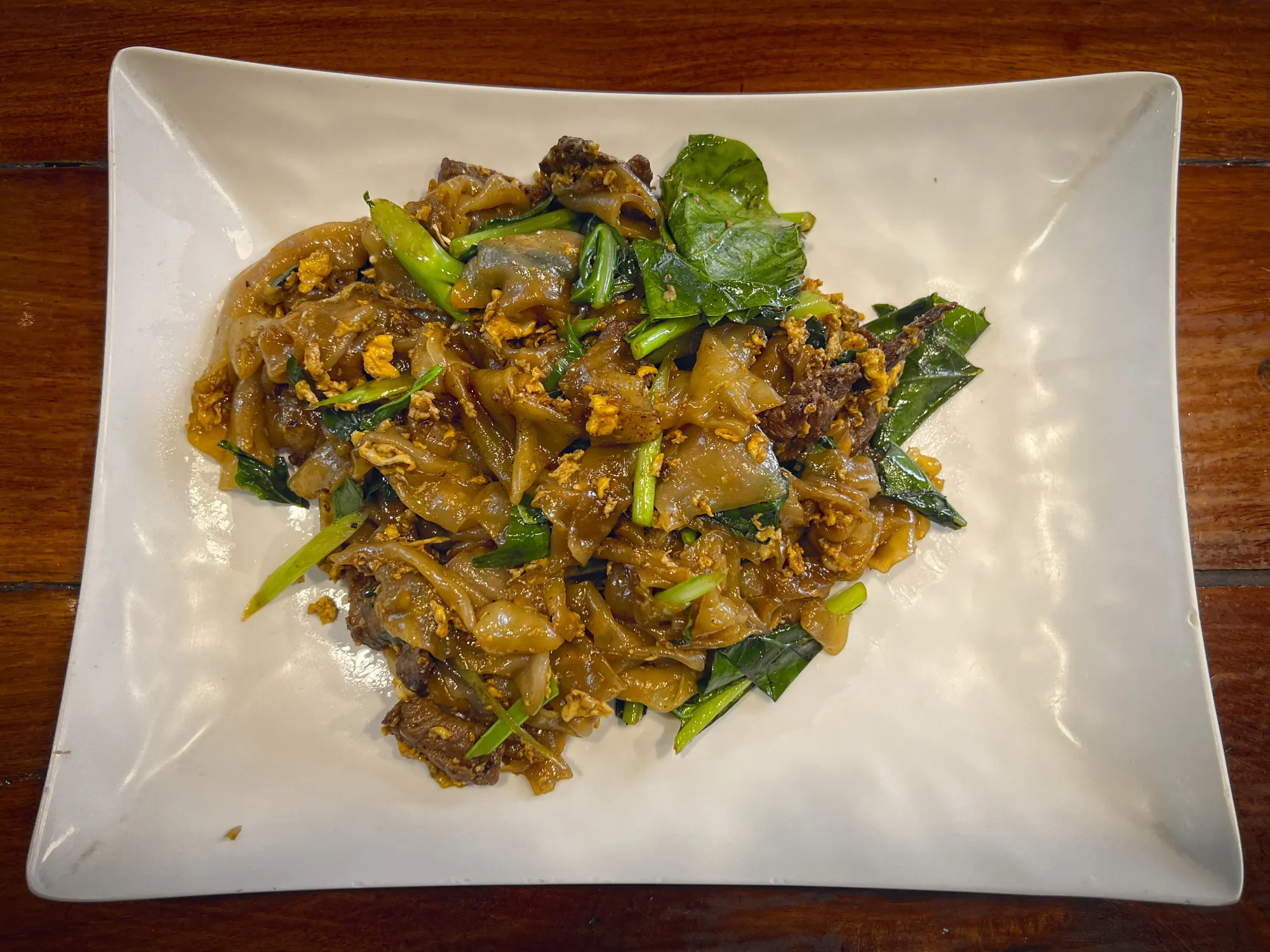
Pad See Ew translates to "stir-fried soy sauce noodles". Pad See Ew is Drunken Noodle's non-spicy sister. The main difference between Pad See Ew is the absence of chilies (or at least far fewer); however, Pad See Ew can also be further defined by the use of Chinese broccoli as one of the vegetables and the non-optional inclusion of eggs. The dish provides a sensational contrast between the chewyness of the broad noodle and the crunchy texture of the Chinese broccoli. It is satisfyingly salty with a perfect subtle sweetness from the chargrill of the high heat caramelization. One of our all-time favorite dishes.
Gaeng Keow Wan / Kreung Gaeng Phet Daeng / Nam Prik Gaeng Karee (Green / Red / Yellow Curry)
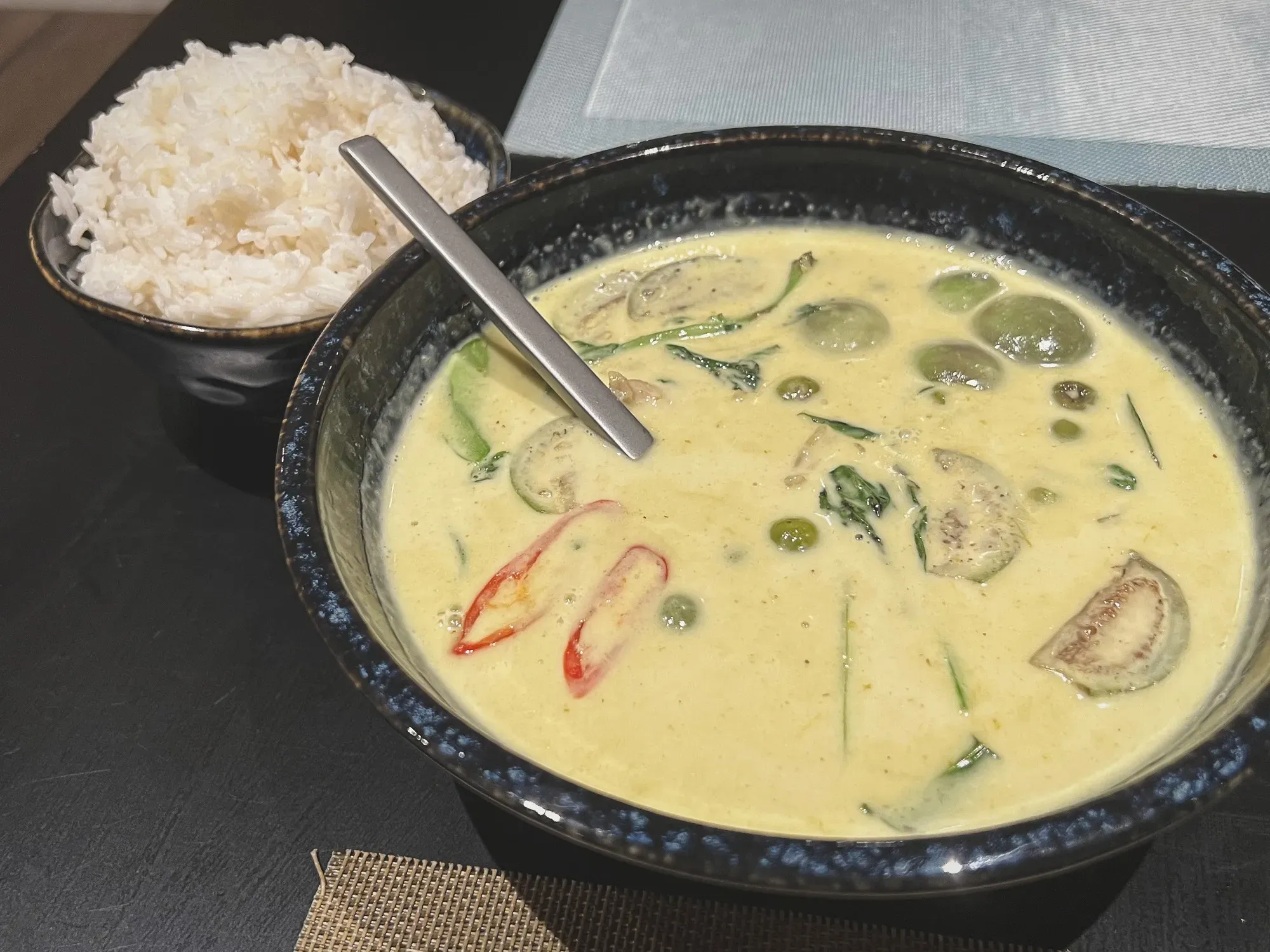
Thai Green, Red, and Yellow Curries are some of the most well-known dishes in Thai cuisine. The origin of these curries is not entirely clear, but they are believed to have originated in central Thailand, and have since become popular dishes throughout the country.
Green curry features a spicy and herbaceous flavor, with green chilies, lemongrass, and kaffir lime leaves being key ingredients. Red curry is spicier than green curry, with dried red chilies giving it its signature heat. Yellow curry is milder than the other two, with turmeric and cumin adding a warm, earthy flavor to the dish.
All three curries typically feature meat or seafood, coconut milk, and vegetables such as eggplant, bamboo shoots, or peppers. The curries are often served with steamed rice and garnished with fresh herbs.
Panang Curry (Phanaeng)
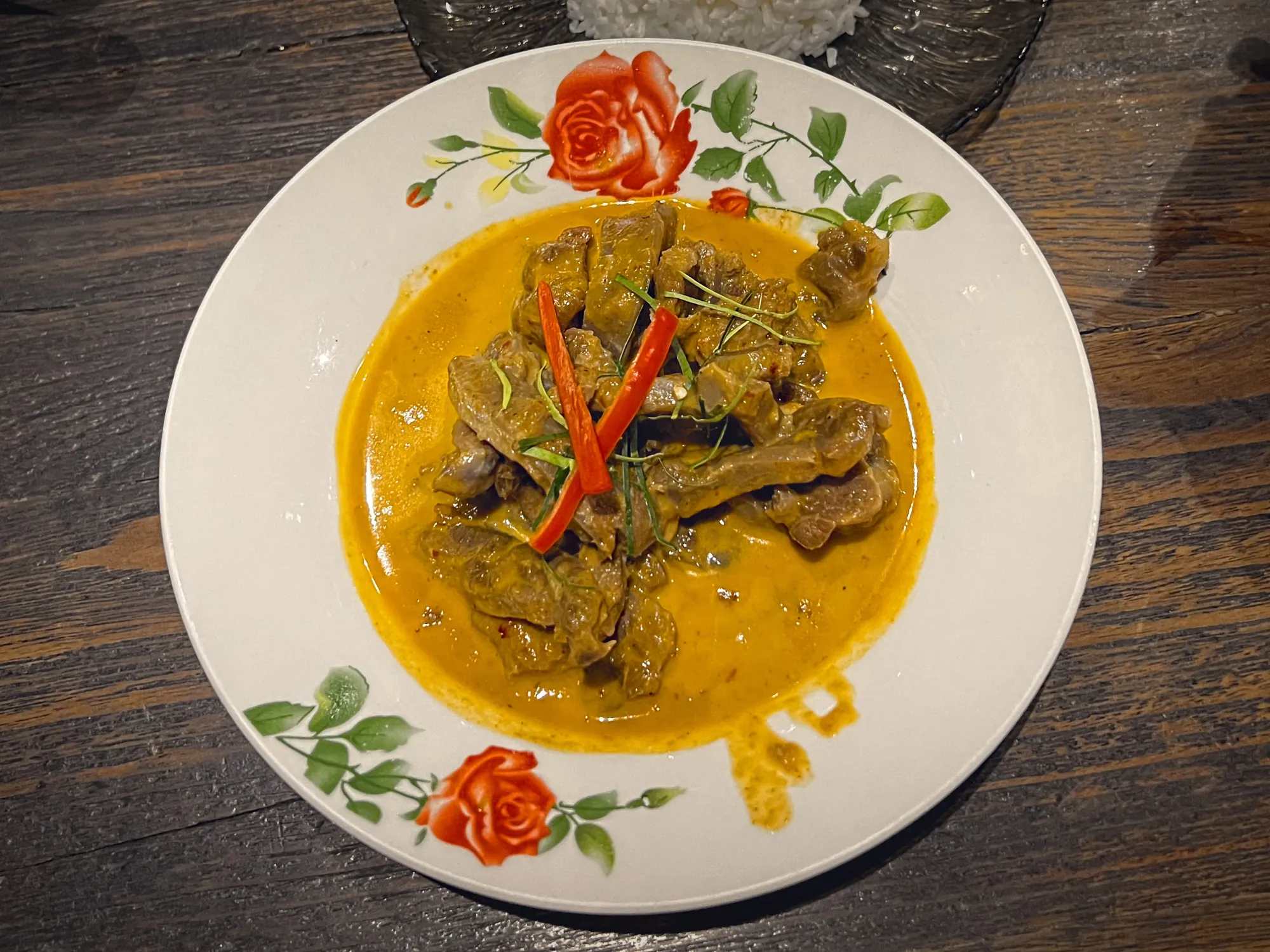
In addition to the three classic curries, there are two other curries from Thailand that have become international stars. Panang curry, also called Phanaeng in southern Thailand, is a curry dish that is typically used with a meat and served with rice. The curry is created with shallots, garlic, cumin, coriander, chili pepper, galangal, lemongrass, lime leaves, fish sauce / coconut oil, palm sugar, roasted peanuts, and coconut cream. It is a thick, extremely rich curry that produces astounding flavor.
Massaman
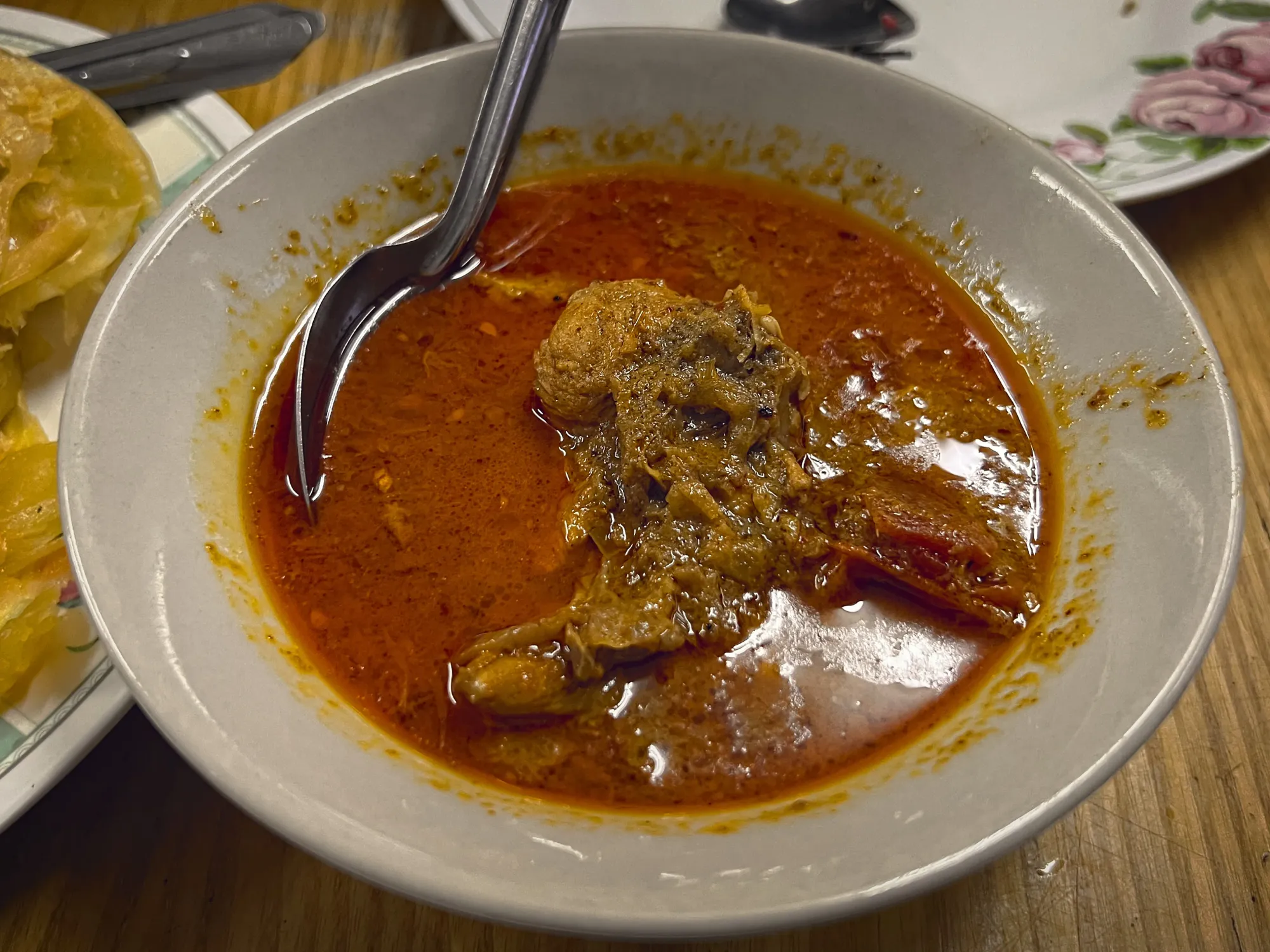
Massaman Curry is a flavorful Thai dish that is known for its rich and aromatic flavors. The origin of the dish is believed to be from southern Thailand, where it was influenced by Indian and Malay cuisines.
The curry features a creamy and slightly sweet sauce made with coconut milk, tamarind, and a blend of spices that includes cinnamon, cardamom, and nutmeg. The dish typically features meat or seafood, along with potatoes, onions, and peanuts, which add a hearty texture to the curry.
Massaman Curry is a beloved dish that has become a staple of Thai cuisine, and is often served with steamed rice and garnished with fresh herbs. Vegetarian or vegan versions are also common, with tofu or vegetables replacing the meat or seafood.
Tom Yum Goong
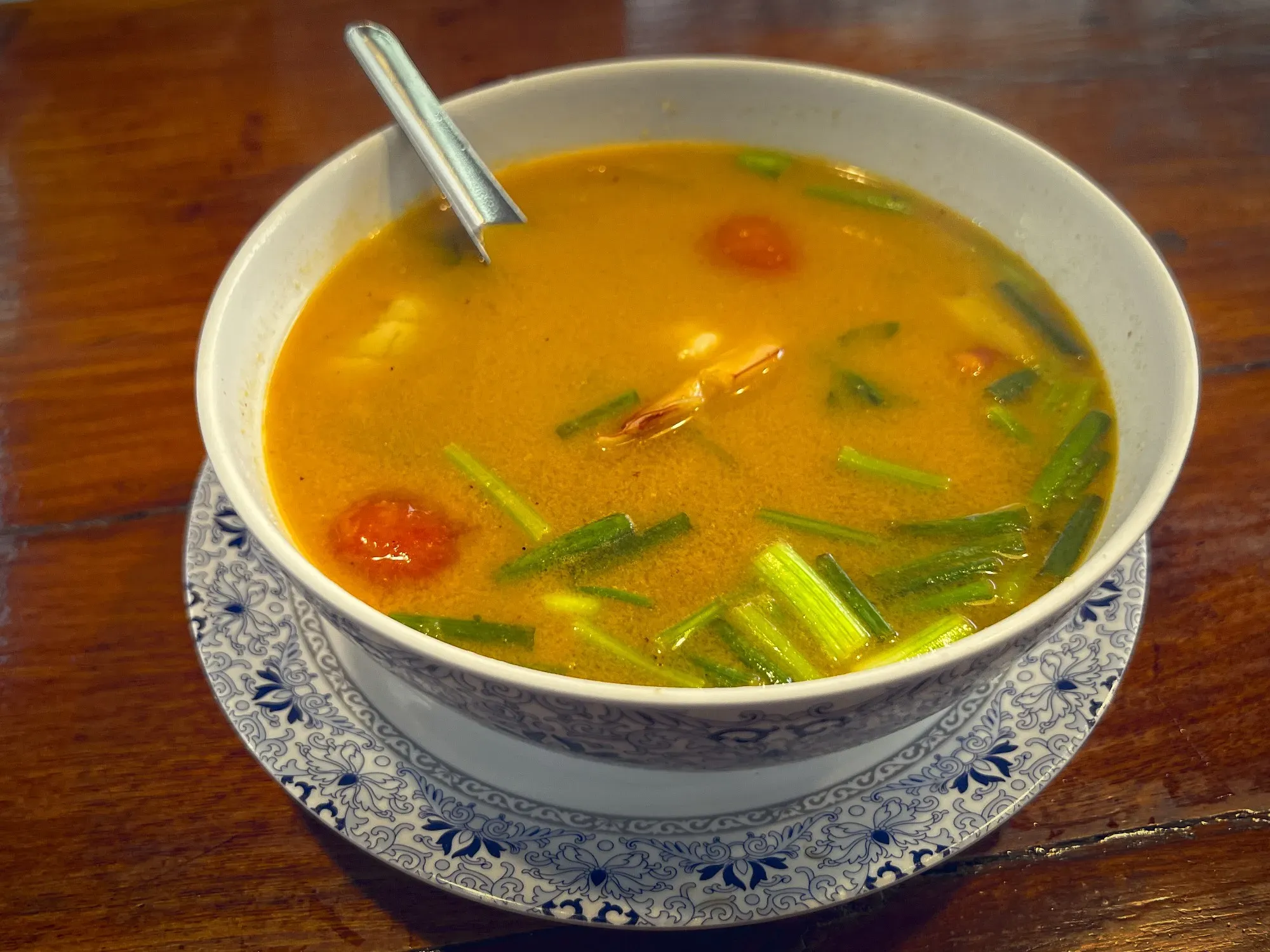
Tom Yum Goong is a popular Thai soup that is known for its spicy and sour flavor. The dish is believed to have originated in central Thailand, and has since become a staple of Thai cuisine.
The soup features a clear broth made with lemongrass, kaffir lime leaves, and galangal, which give it its signature aroma and flavor. The soup is typically made with shrimp, although other seafood or meat can also be used, and is often flavored with chili peppers, lime juice, and fish sauce.
Tom Yum Goong is a beloved dish that is enjoyed all over the world, and is often served as a starter or a light meal. Vegetarian or vegan versions are also common, with tofu or vegetables replacing the meat or seafood.
Tom Kha Gai
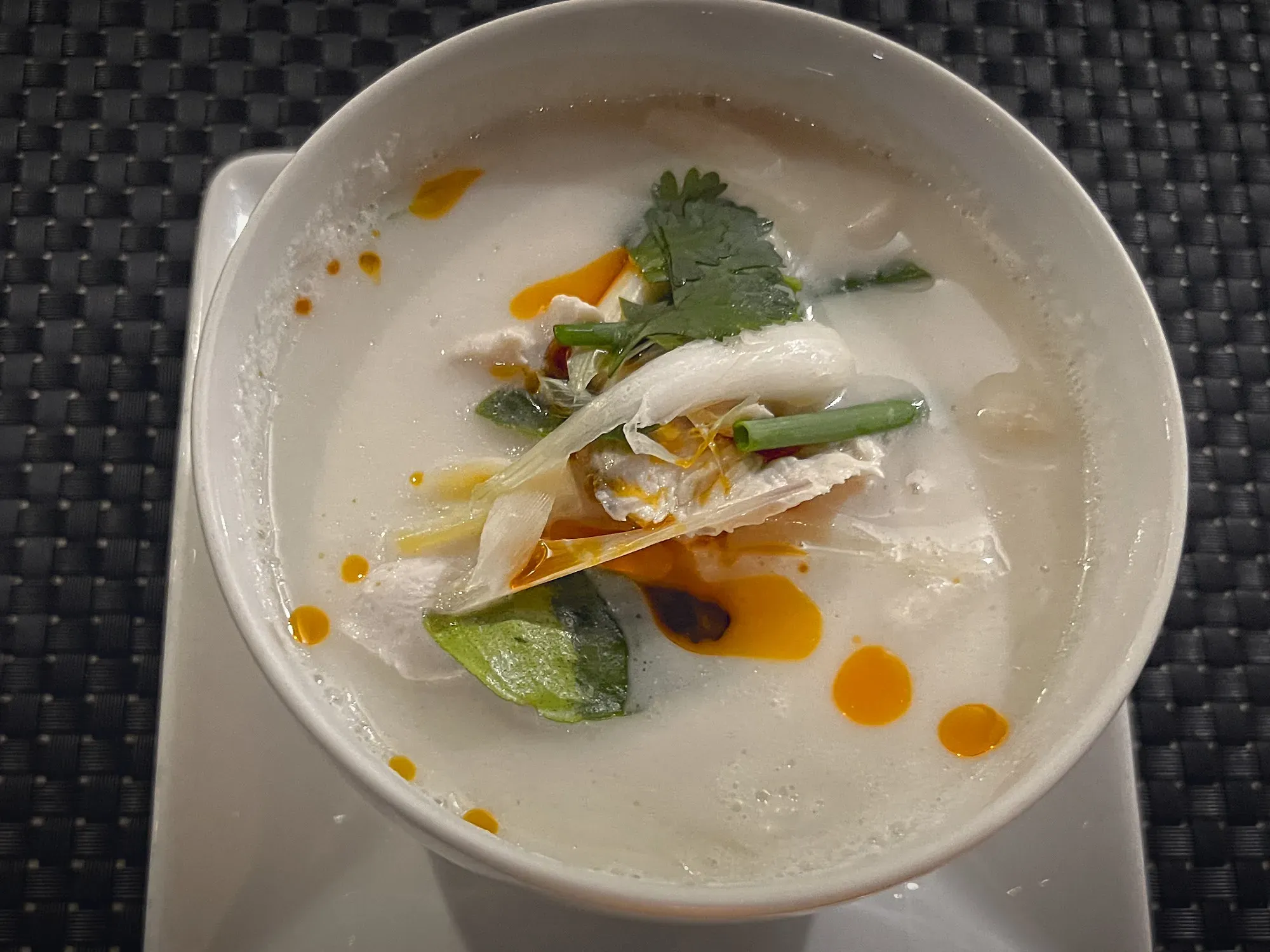
Tom Kha Gai is a flavorful Thai soup that is known for its creamy and aromatic flavor. The dish is believed to have originated in central Thailand, and is a popular dish throughout the country.
The soup features a coconut milk-based broth that is flavored with lemongrass, galangal, and kaffir lime leaves. The soup is typically made with chicken, although other meats or seafood can also be used, and is often flavored with chili peppers, lime juice, and fish sauce.
Tom Kha Gai is a beloved dish that is often served as a starter or a light meal, and is sometimes accompanied by steamed rice. Vegetarian or vegan versions are also common, with tofu or vegetables replacing the meat or seafood.
Pad Krapao (Moo Sap) / Pad Kra Pow
Pad Krapao is a popular Thai dish that is known for its bold and spicy flavor. The dish is believed to have originated in central Thailand, and is a staple of Thai street food.
The dish features minced meat, typically pork or chicken, that is stir-fried with garlic, chili peppers, and holy basil. The dish is often served with a fried egg on top and is accompanied by steamed rice.
Pad Krapao is a beloved dish that is enjoyed throughout Thailand and has become a popular dish in Thai restaurants around the world. It is known for its strong and bold flavors and is often described as a comfort food by Thai locals.
Kao Niew Ma Muang
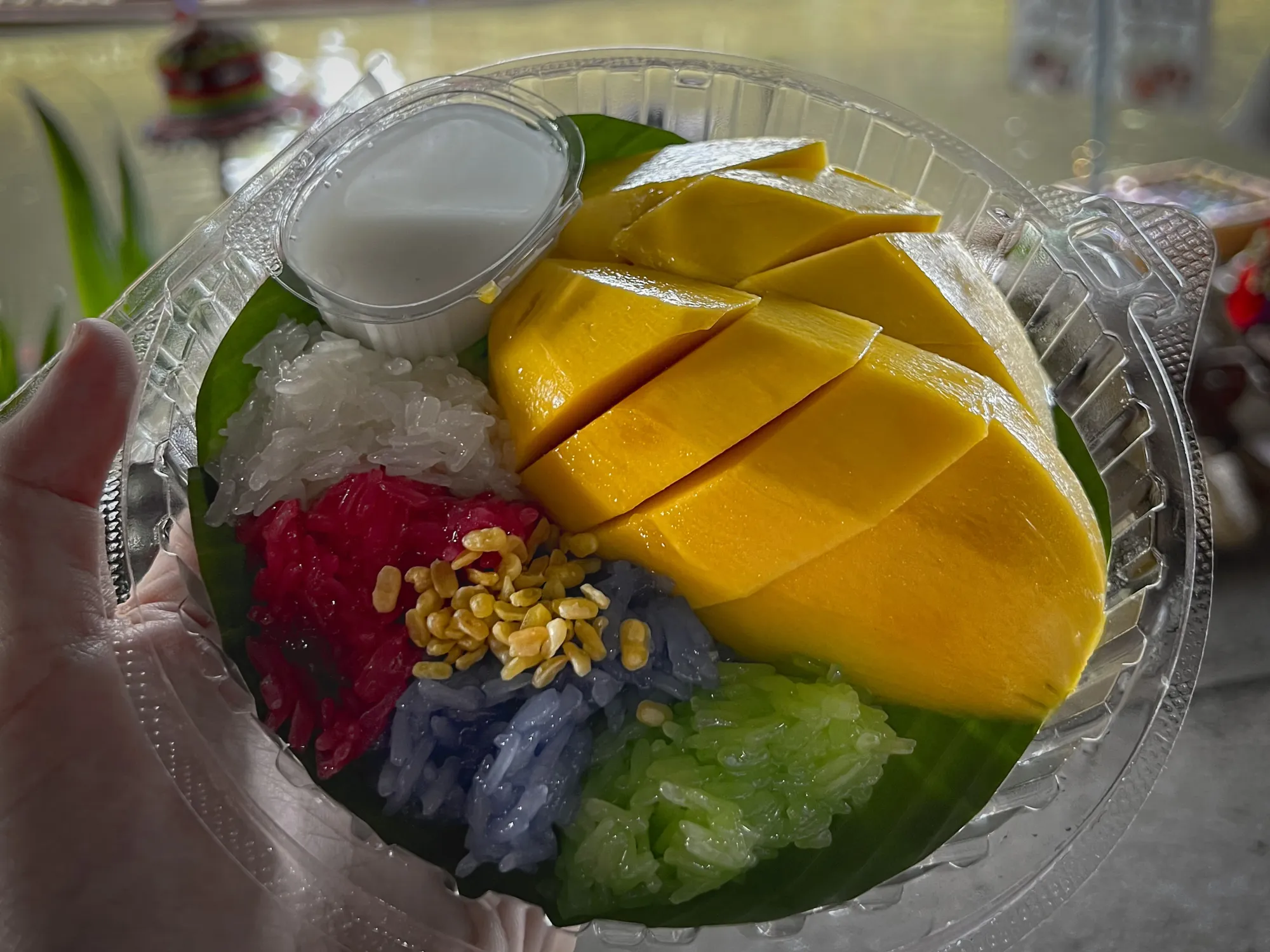
Kao Niew Ma Muang, also known as mango sticky rice, is a beloved Thai dessert that is known for its sweet and creamy flavor. The dish is believed to have originated in northern Thailand, where glutinous rice and fresh mangoes are abundant.
The dessert features sticky rice that is cooked with coconut milk and sugar, and is served with slices of fresh ripe mango on top. The dish is often garnished with toasted sesame seeds or roasted mung beans for added texture and flavor.
Kao Niew Ma Muang is a popular dessert that is enjoyed throughout Thailand and is often served during special occasions such as the Songkran festival. It has also become a popular dish in Thai restaurants around the world, and is known for its unique blend of sweet and savory flavors.
Regional-Specific Shoutouts
Guay Teow ("Noodle Soup")
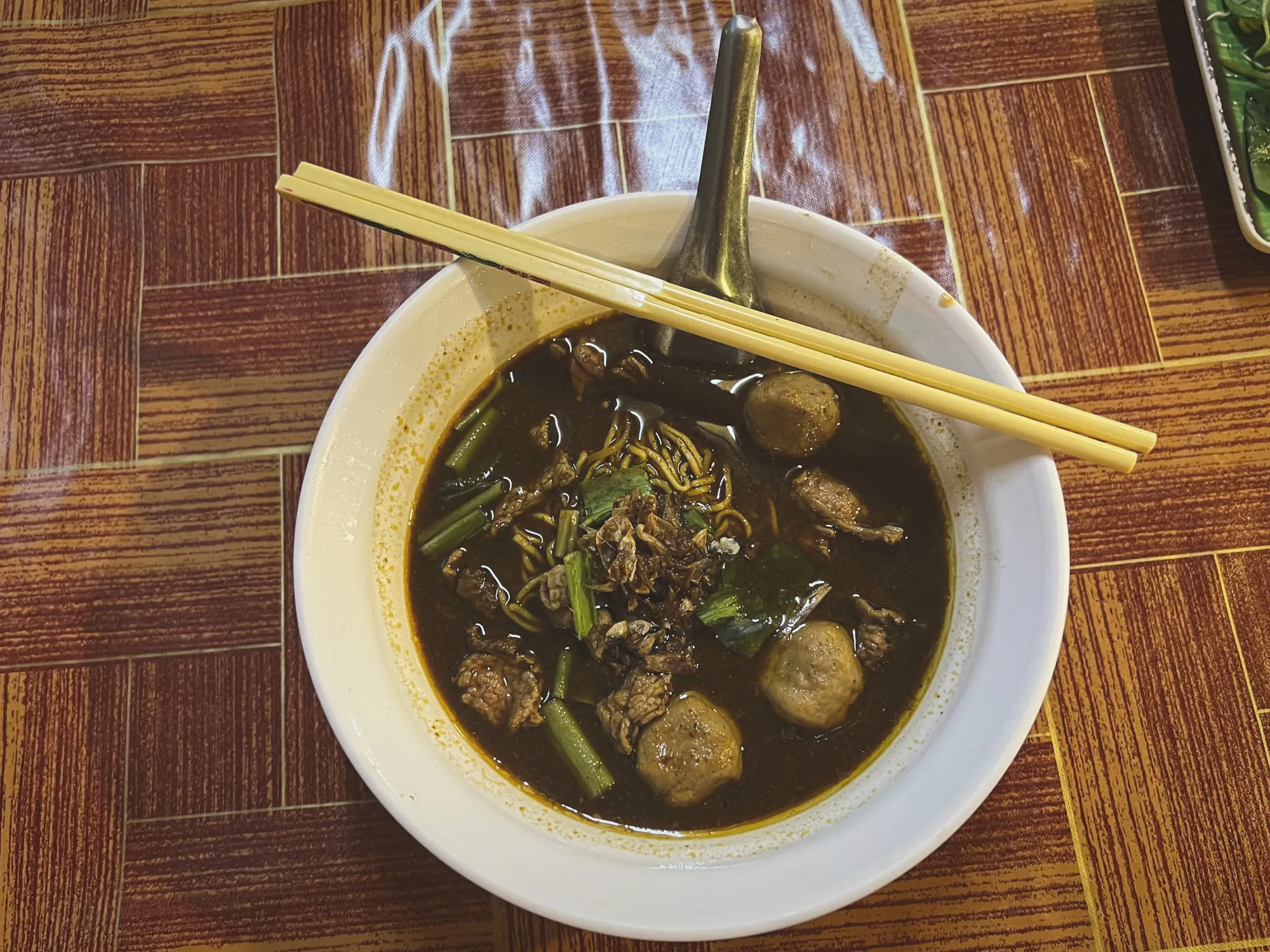
Guay Teow, also spelled as "Kuay Teow", is a popular noodle dish that is a staple of Thai cuisine. The dish is believed to have originated in China and was introduced to Thailand by Chinese immigrants. It is a beloved dish that is enjoyed throughout Thailand and has become a popular street food dish.
The dish features thin, flat rice noodles that are stir-fried with meat, seafood, or vegetables, and is often flavored with soy sauce, fish sauce, and oyster sauce. The dish can be served dry or with a broth, and is often garnished with chopped scallions, bean sprouts, and cilantro.
Kai Jeow
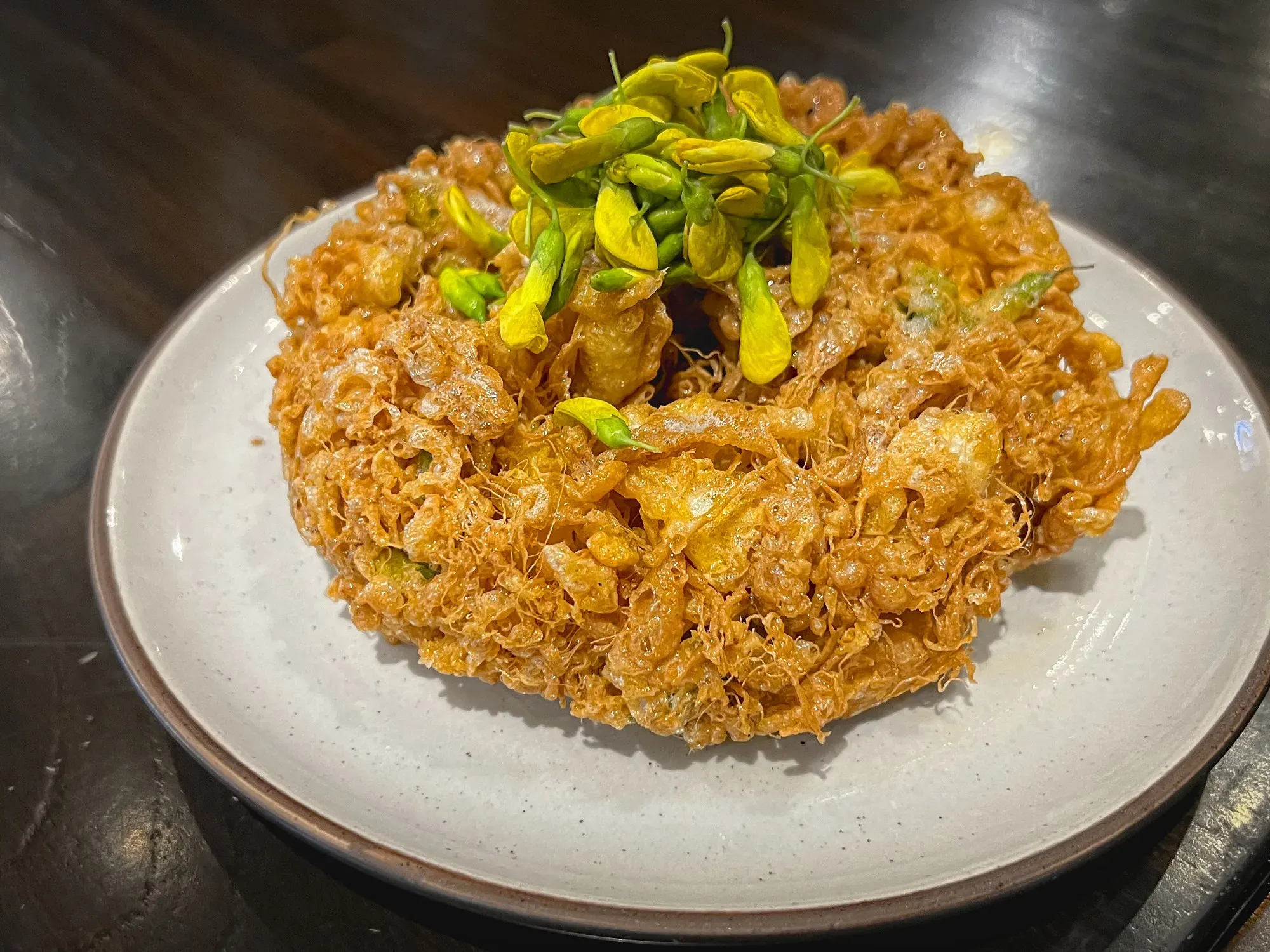
Kai Jeow, also known as Thai omelette, is a simple and delicious dish that is a staple of Thai cuisine. The dish is believed to have originated in central Thailand and is a popular street food.
The dish features a simple omelette made with eggs, fish sauce, and chopped scallions. The omelette is typically served with steamed rice and is often accompanied by a sweet chili sauce.
Kanom Bueang / A-Pong
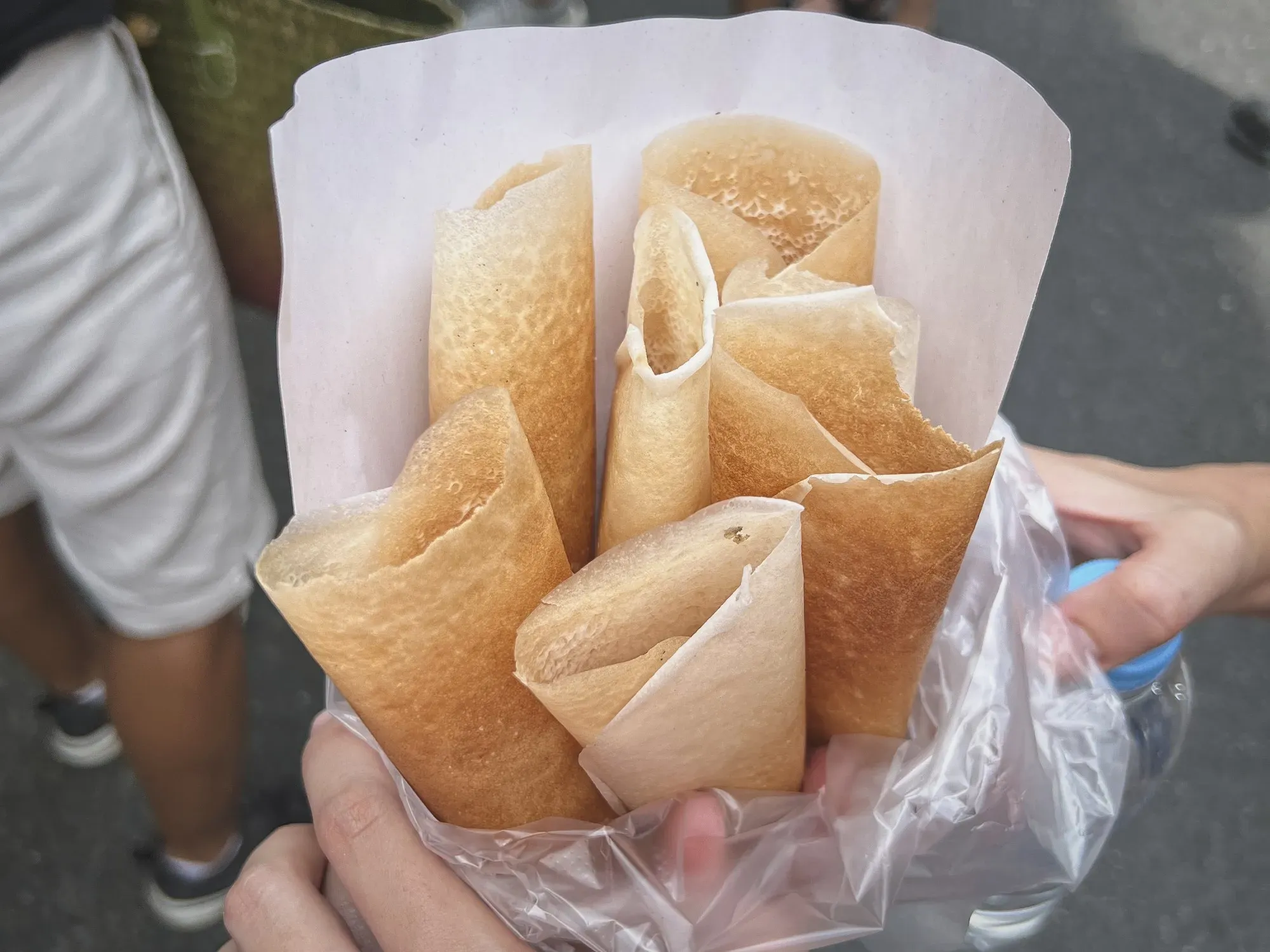
Kanom Bueang, also known as Thai crispy pancakes, is a popular Thai snack that is believed to have originated in the central region of Thailand. The dish consists of small, crispy pancakes that are made from rice flour and mung bean flour, and are typically filled with a sweet or savory filling. The sweet fillings may include coconut cream or fruit, while the savory fillings may include shredded coconut or minced pork. The pancakes are often folded into a cone shape and are served as a light and tasty snack.
A-Pong are also crispy Thai coconut pancakes, but rolled without any of the filling. Even without any filling, these tasty street food snacks are delicious.
Khao Soi
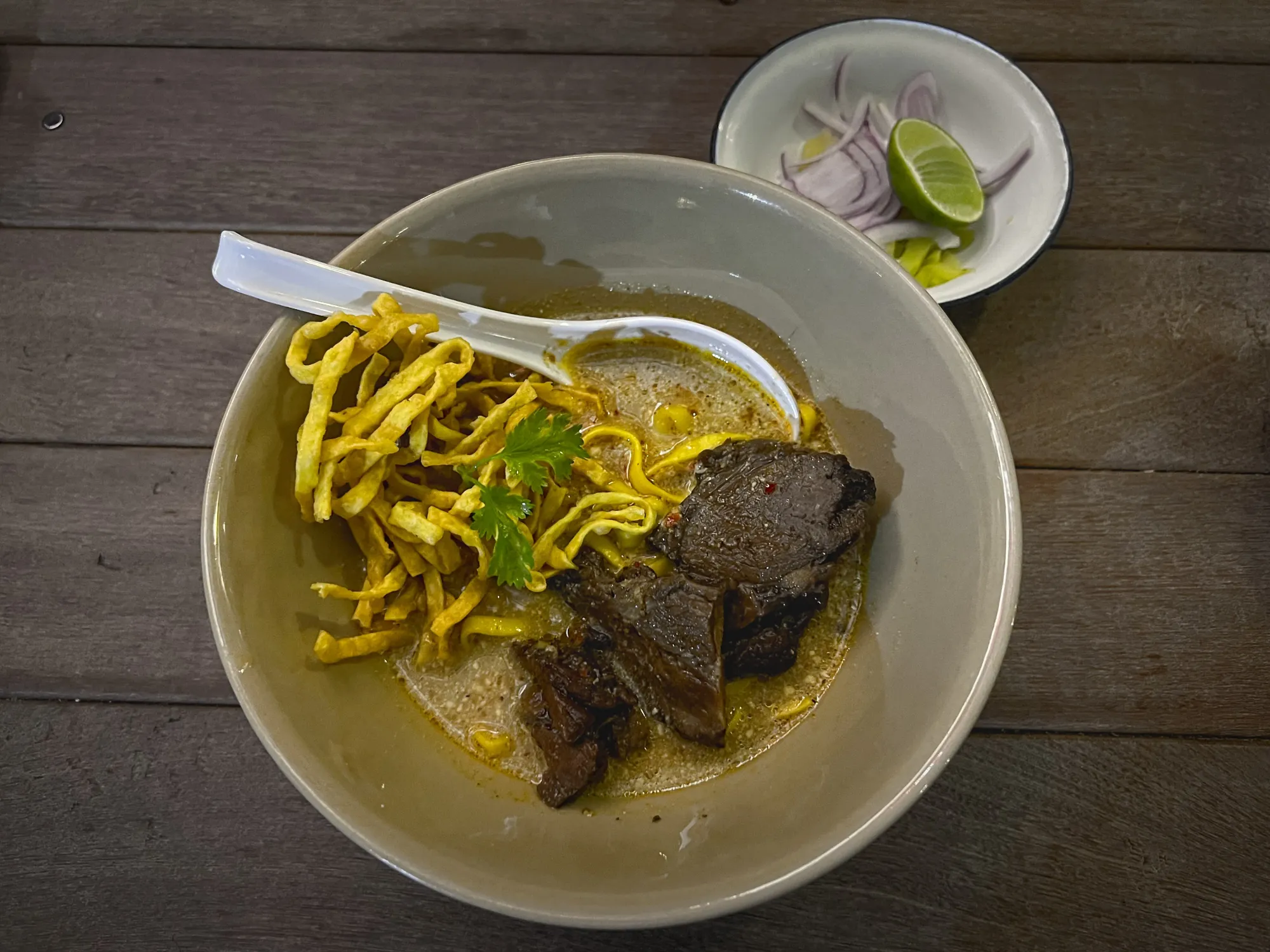
Khao Soi is a popular Northern Thai dish that is known for its unique blend of flavors and textures. The dish is believed to have originated in Chiang Mai, a city in Northern Thailand.
Khao Soi is a noodle soup dish that features a rich, coconut-based curry broth that is flavored with a blend of spices, including turmeric, coriander, and cumin. The dish is typically served with egg noodles, sliced chicken or beef, and is often topped with crispy noodles and pickled cabbage.
Khao Soi has become a popular dish in Thai restaurants around the world and is known for its delicious and complex flavor profile. It has been described as a fusion of Burmese and Thai cuisine, and is a must-try for those looking to experience Northern Thai cuisine.
Khanom Jeen Ngeow
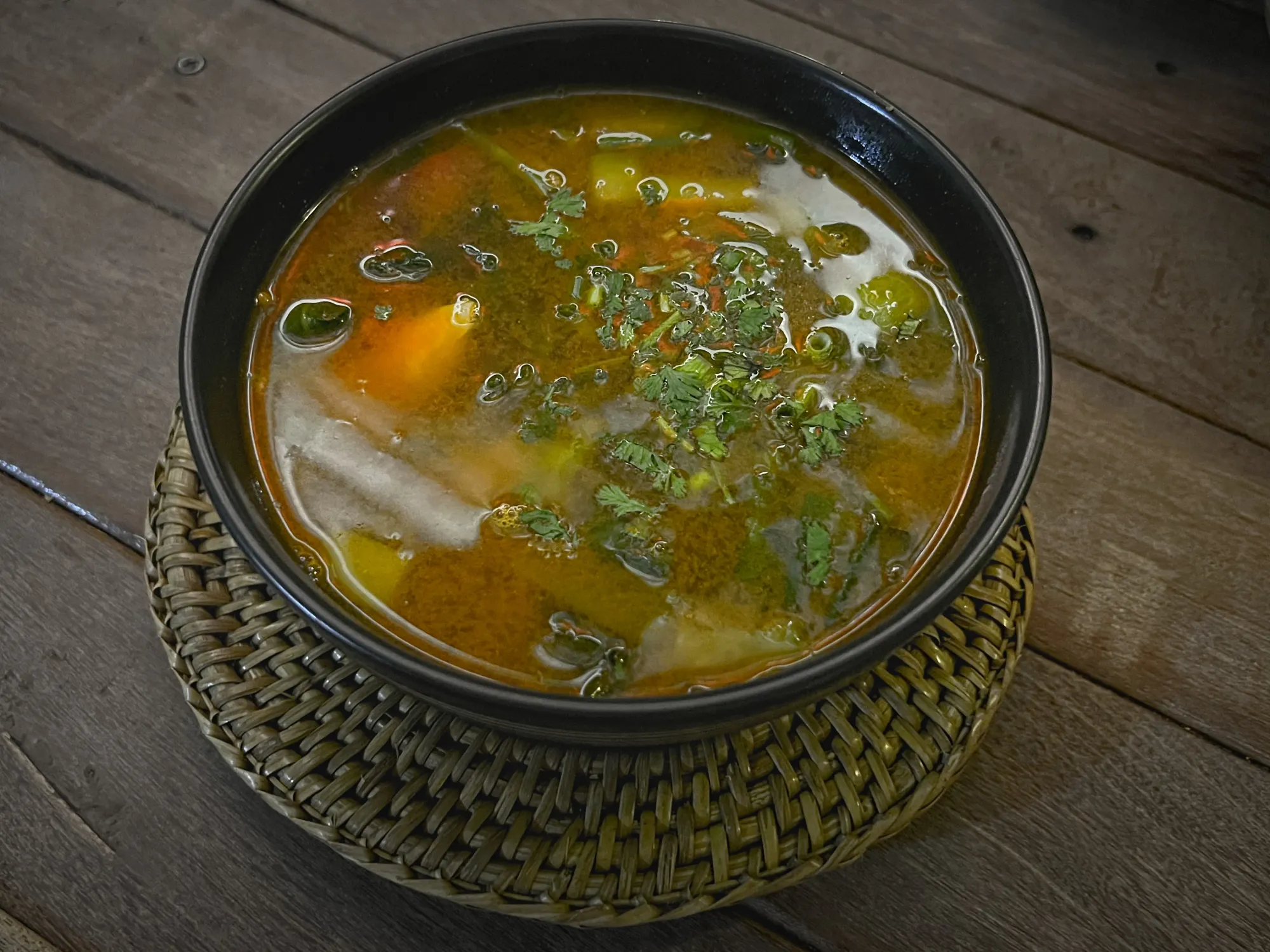
Khanom Jeen Ngeow is a traditional Thai dish. The dish consists of rice noodles that are served with a spicy and flavorful curry soup made from a blend of spices, coconut milk, and meat, such as chicken, beef, or pork.
The curry soup is typically made with a blend of herbs and spices, including galangal, lemongrass, and chili peppers, which give it a unique and spicy flavor. The dish is often served with a variety of fresh herbs, such as basil and mint, which help to balance out the spiciness of the curry soup.
Khanom Jeen Ngeow is a beloved dish in Thailand and is often served at special events and celebrations. It is a must-try for those looking to experience the unique and flavorful cuisine of the region.
Nam Prik Noom Kab Moo
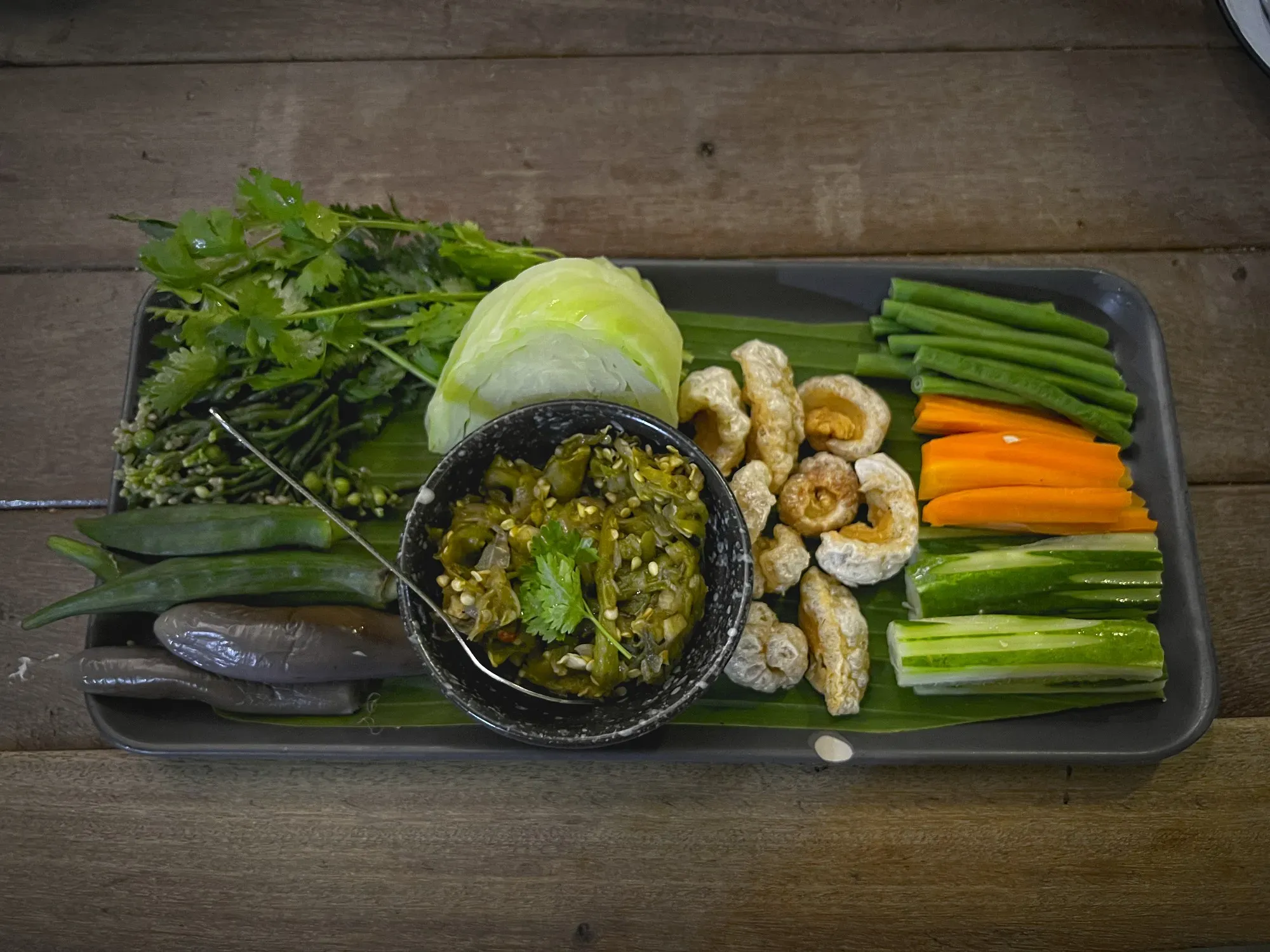
Nam Prik Noom Kab Moo is a popular Thai dish that originated in the Northern region of Thailand, specifically in the city of Chiang Mai. The dish consists of a spicy green chili dip that is typically served with grilled pork, fresh vegetables, and sticky rice.
The dip is made from a blend of roasted green chilies, shallots, garlic, and a variety of herbs and spices, including shrimp paste, fish sauce, and palm sugar. The ingredients are ground together using a mortar and pestle to create a flavorful and spicy paste.
Nam Prik Noom Kab Moo is a favorite dish among locals in Northern Thailand and is often served at street food stalls and markets throughout the region. It is a must-try for those looking to experience the unique and spicy flavors of Northern Thai cuisine.
Sai Ua
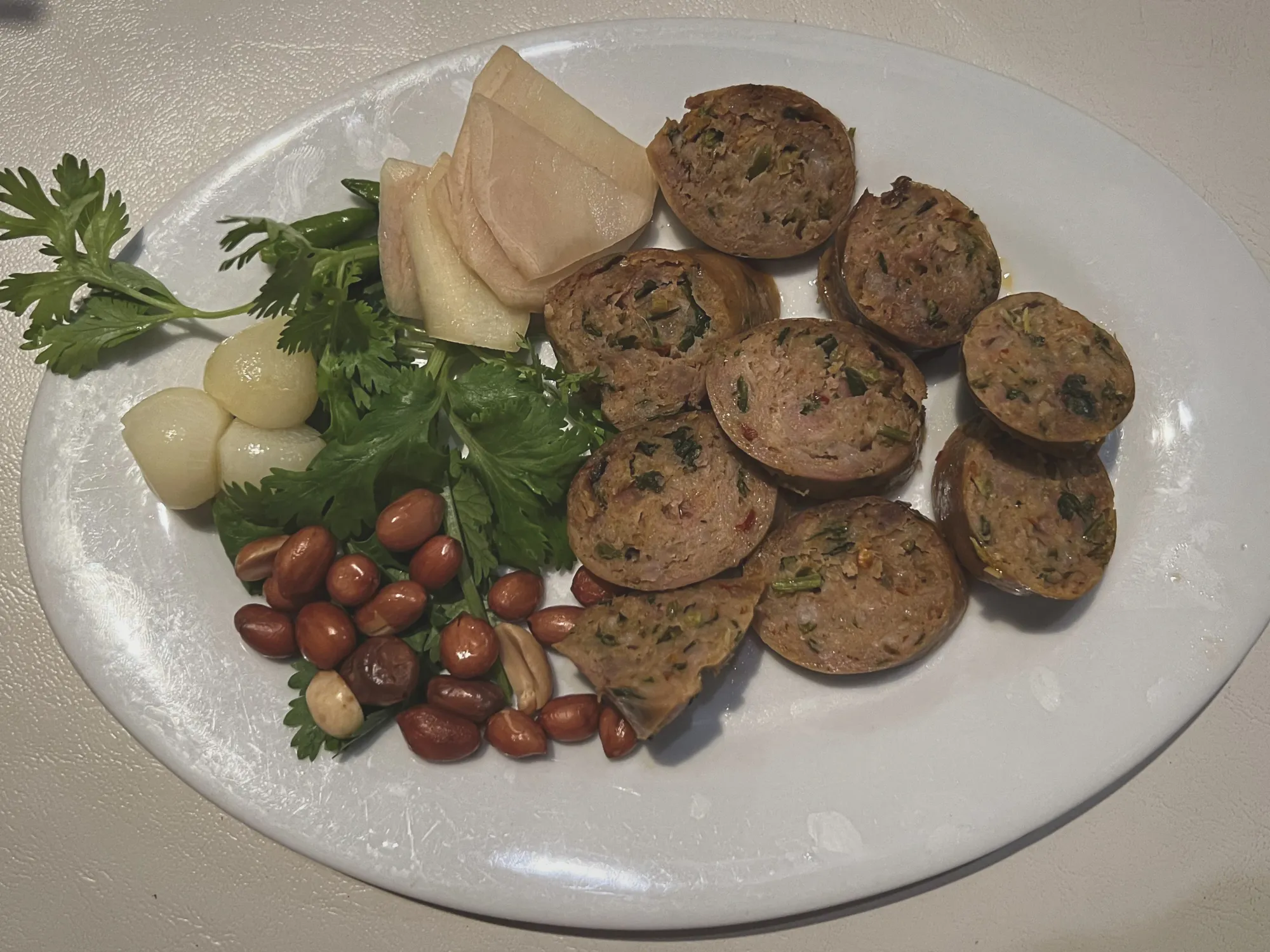
Sai Ua is a traditional sausage from Northern Thailand, specifically from the Chiang Mai region. It is made from ground pork that is mixed with a variety of herbs and spices, including lemongrass, kaffir lime leaves, and galangal, which give it a unique and flavorful taste.
The sausage is typically grilled or fried and served with fresh herbs, such as cilantro and mint, and sticky rice. It is a popular dish in Northern Thailand and is often served at street food stalls and markets throughout the region. It's similarity to Laotian sausage bearing a similar name shows the powerful Laotian influence in North and Eastern Thailand.
Khao Pad
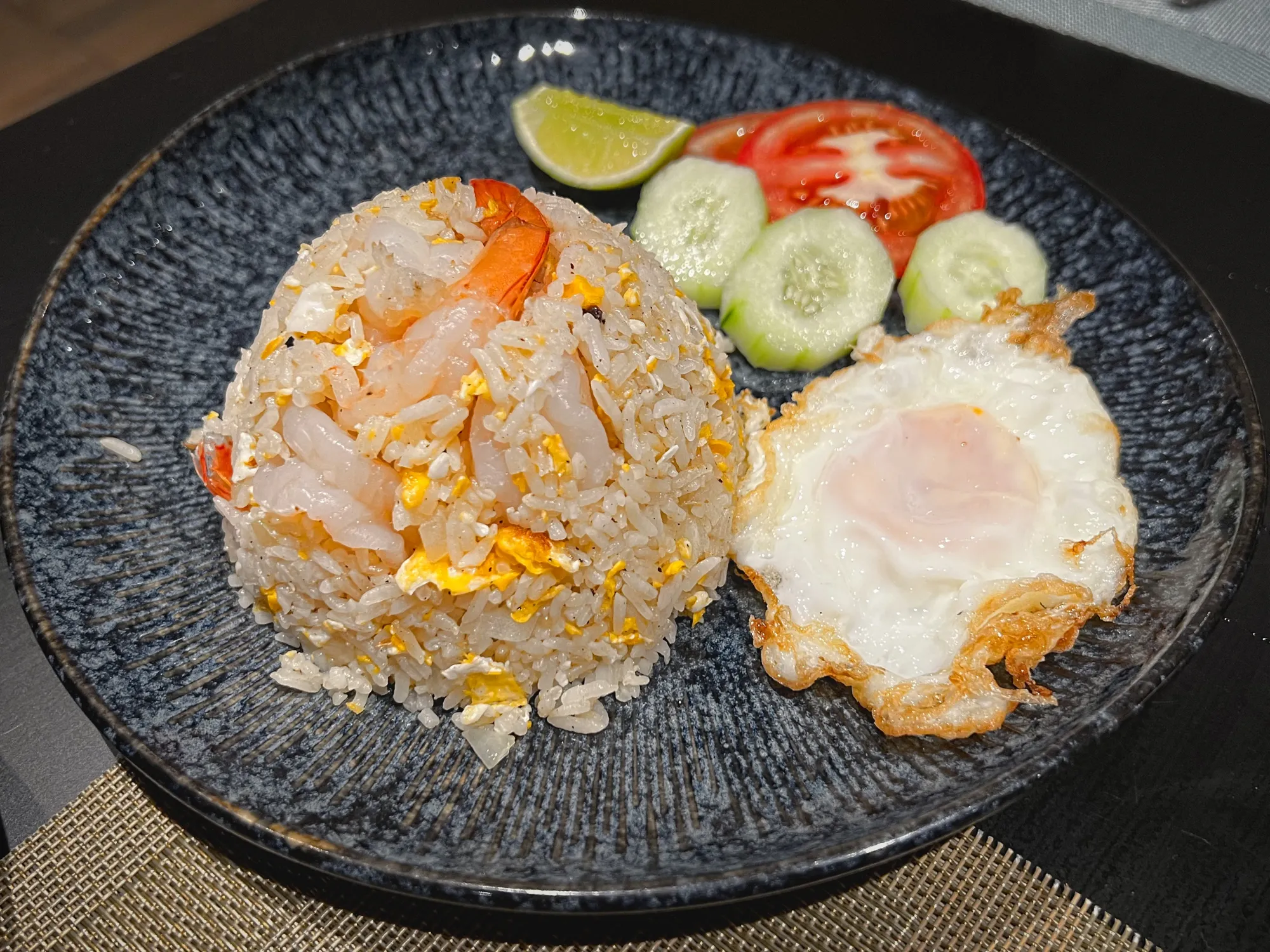
Khao Pad is a popular Thai dish that consists of fried rice with egg. The dish is a staple of Thai cuisine and can be found at many street food stalls and restaurants throughout the country.
Khao Pad is made by stir-frying cooked rice with egg, onions, garlic, and other ingredients such as vegetables, meat, or seafood (Khao Pad Gai being chicken stir-fried rice). It is typically seasoned with soy sauce, fish sauce, and sugar for a savory and slightly sweet flavor.
Pak Boong
Pak Boong, also known as morning glory or water spinach, is a leafy green vegetable that is commonly used in Thai cuisine. It is a popular ingredient in stir-fries, soups, and curries, and is used as a side dish at any meal. While many give credit to morning glory to Thailand, it should be noted that the plant comes from China and is extremely popular throughout many Southeast Asian countries.
The vegetable is native to Southeast Asia and has been cultivated in Thailand for centuries. It is known for its tender shoots and leaves, which have a slightly sweet and nutty flavor. Pak Boong is a nutritious and versatile ingredient that is rich in vitamins and minerals.
Poo Phad Phong Karee
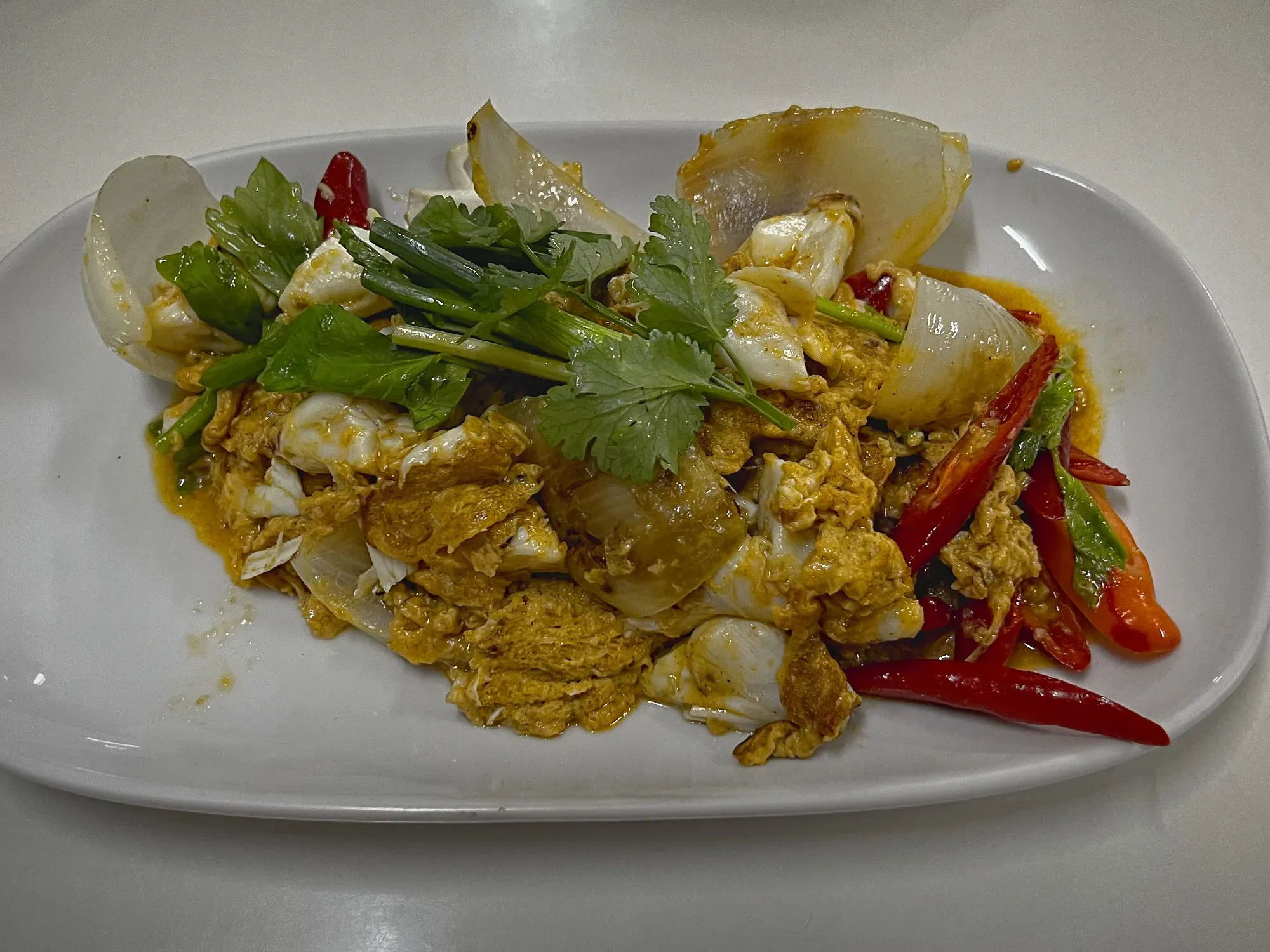
Poo Phad Phong Karee, also known as Thai yellow curry with crab, is a popular seafood dish in Thailand. It consists of fresh crab that is stir-fried with aromatic spices and curry paste, such as turmeric, coriander, and cumin, and served with vegetables, such as onions, bell peppers, and carrots.
The dish has its roots in southern Thailand, where fresh seafood is abundant and curry dishes are common. It is a favorite among locals and tourists alike, and is often served at seafood restaurants and street food stalls throughout the country.
Gai Med Ma Muang
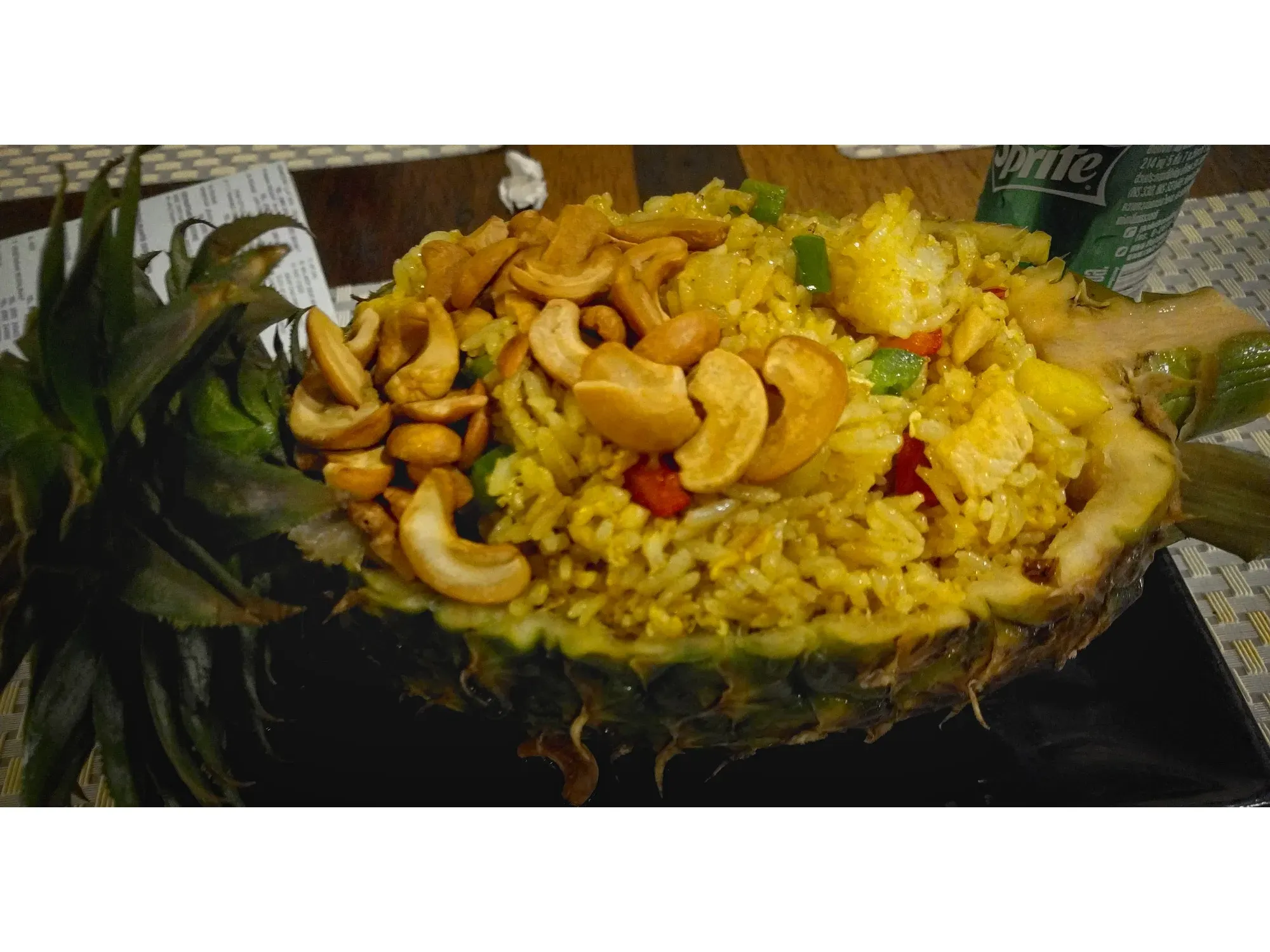
Gai Med Ma Muang, also known as Thai chicken with cashew nuts, is a popular stir-fry dish in Thai cuisine. It typically consists of tender chicken pieces that are stir-fried with cashew nuts, vegetables such as onions, bell peppers, and carrots, and a sweet and savory sauce made from oyster sauce, soy sauce, and sugar. The dish is believed to have originated in the northern regions of Thailand, where cashew trees are common and stir-frying is a popular cooking method.
Kaeng Som
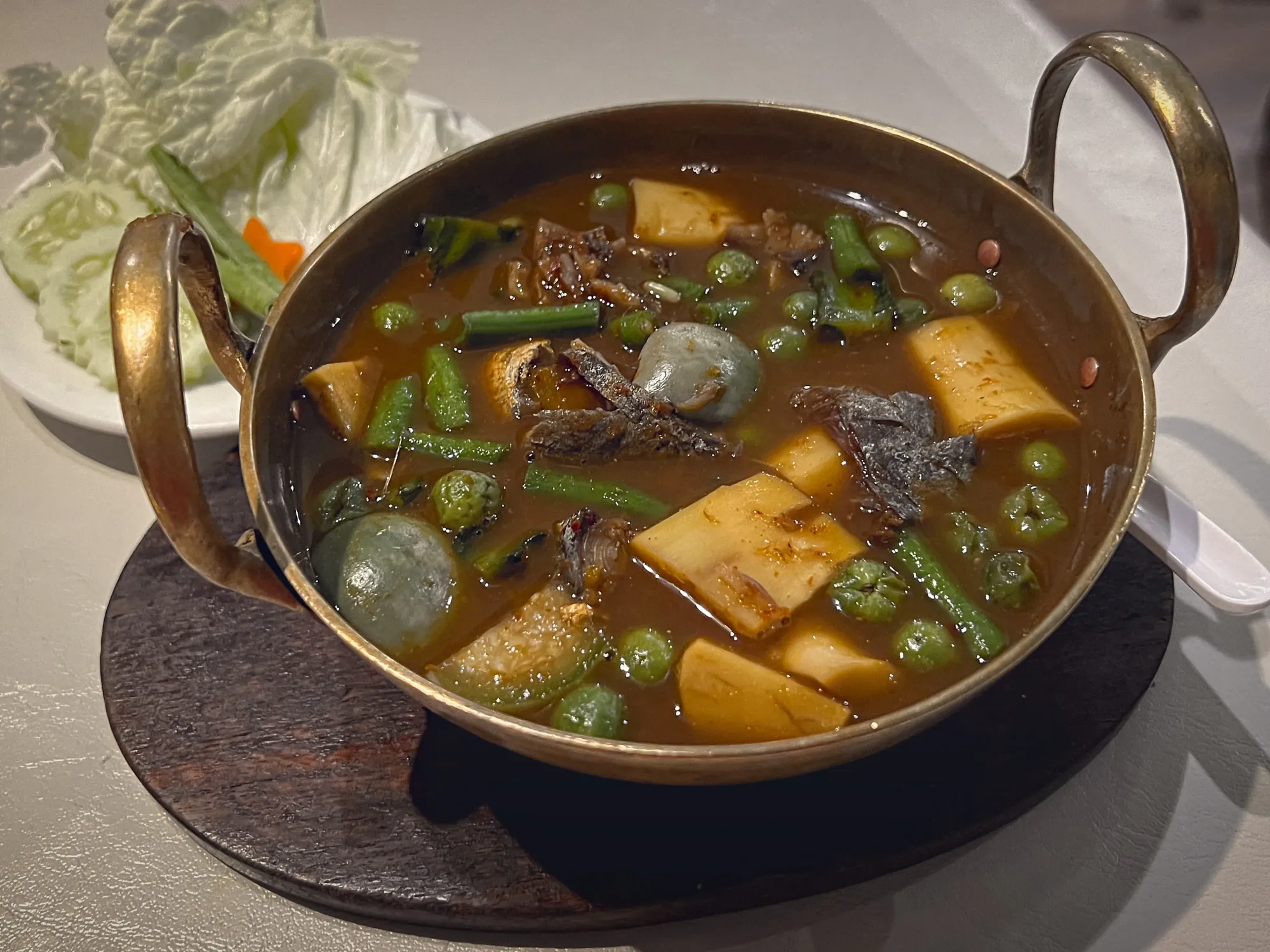
Kaeng Som, also known as Thai sour curry, is a spicy and tangy soup-like dish in Thai cuisine. It is typically made with fish or shrimp, mixed with vegetables such as pumpkin, tomatoes, and bamboo shoots, and flavored with a mix of sour and spicy ingredients, such as tamarind paste, lime juice, and chili peppers.
The dish is believed to have originated in the southern regions of Thailand, where seafood and sour flavors are common in cuisine. Kaeng Som is a flavorful and refreshing dish that perfectly showcases the bold and vibrant flavors of Thai cuisine.
Sen Mee Gaeng Poo
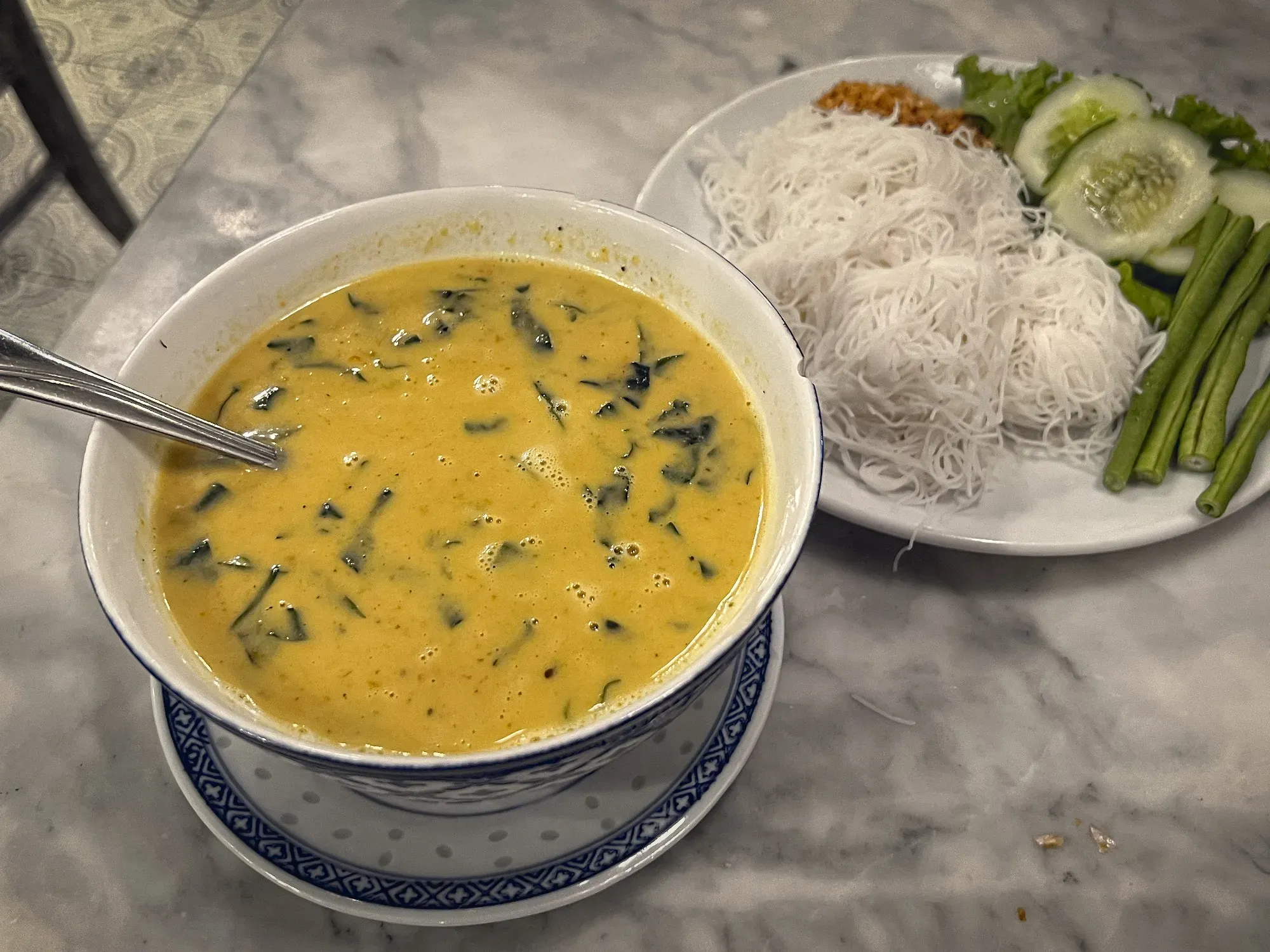
Sen Mee Gaeng Poo, also known as crab curry with rice vermicelli, is a delicious and comforting Thai dish. It features tender crab meat cooked in a rich and flavorful curry sauce and served over a bed of thin rice vermicelli noodles.
The dish is believed to have originated in the southern regions of Thailand, where seafood is abundant and curry dishes are a staple. Sen Mee Gaeng Poo is a dish that is perfect for seafood lovers, offering a mix of sweet, salty, spicy, and savory flavors that will leave your taste buds wanting more.
Moo Hong
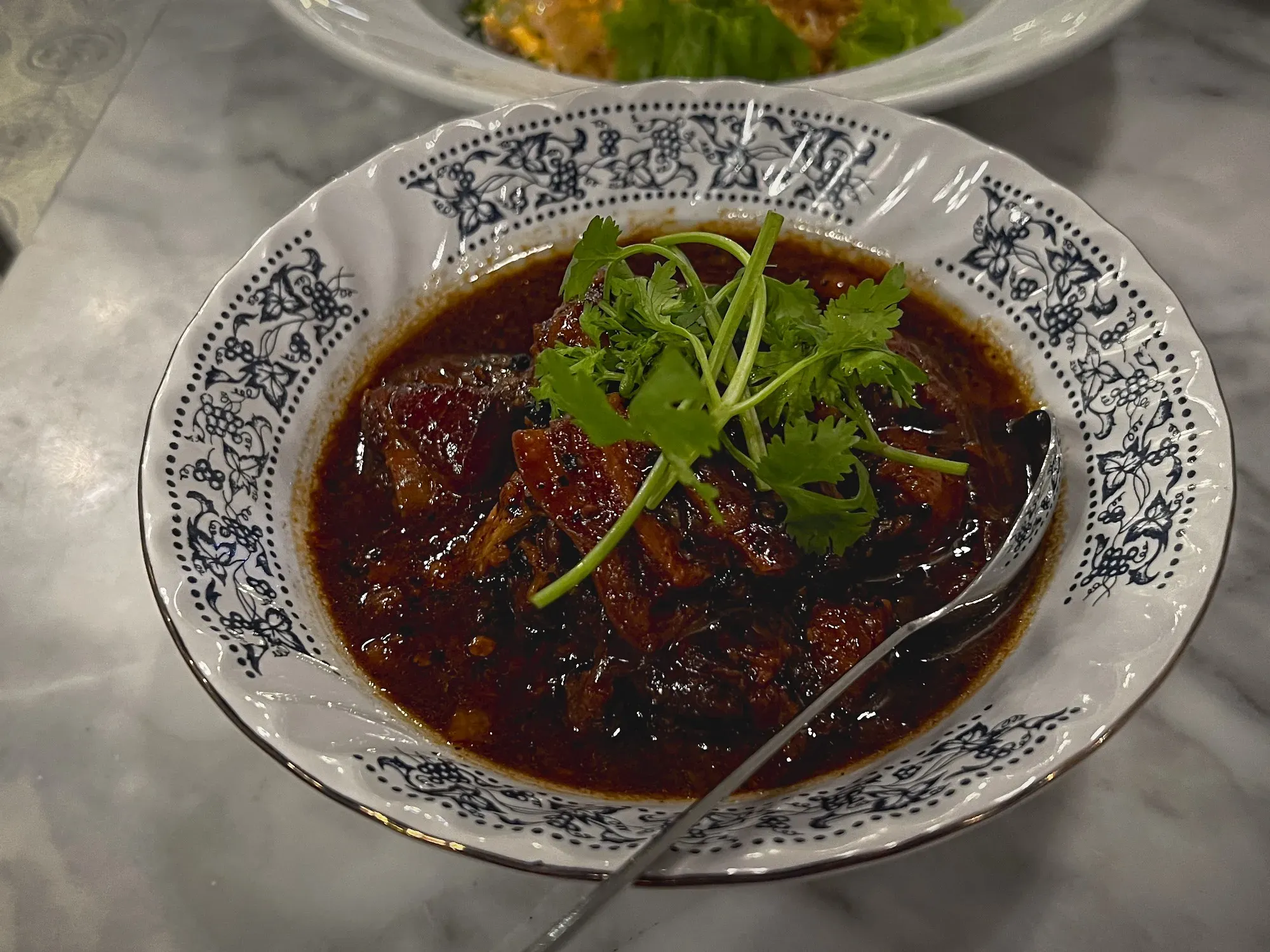
Moo Hong is a classic Thai dish that features tender pork belly slowly cooked in a flavorful sauce made with soy sauce, sugar, and spices. The resulting dish is rich and savory with a hint of sweetness and a deep umami flavor.
Moo Hong is believed to have originated in central Thailand, where pork is a common protein used in many dishes. However, it is also extremely popular in Southern Thailand and has been for a long time.
Moo Hong is a hearty and comforting dish that is perfect for a chilly day. It is typically served with steamed rice and a side of vegetables, making it a well-rounded and satisfying meal.
Mee Sapam
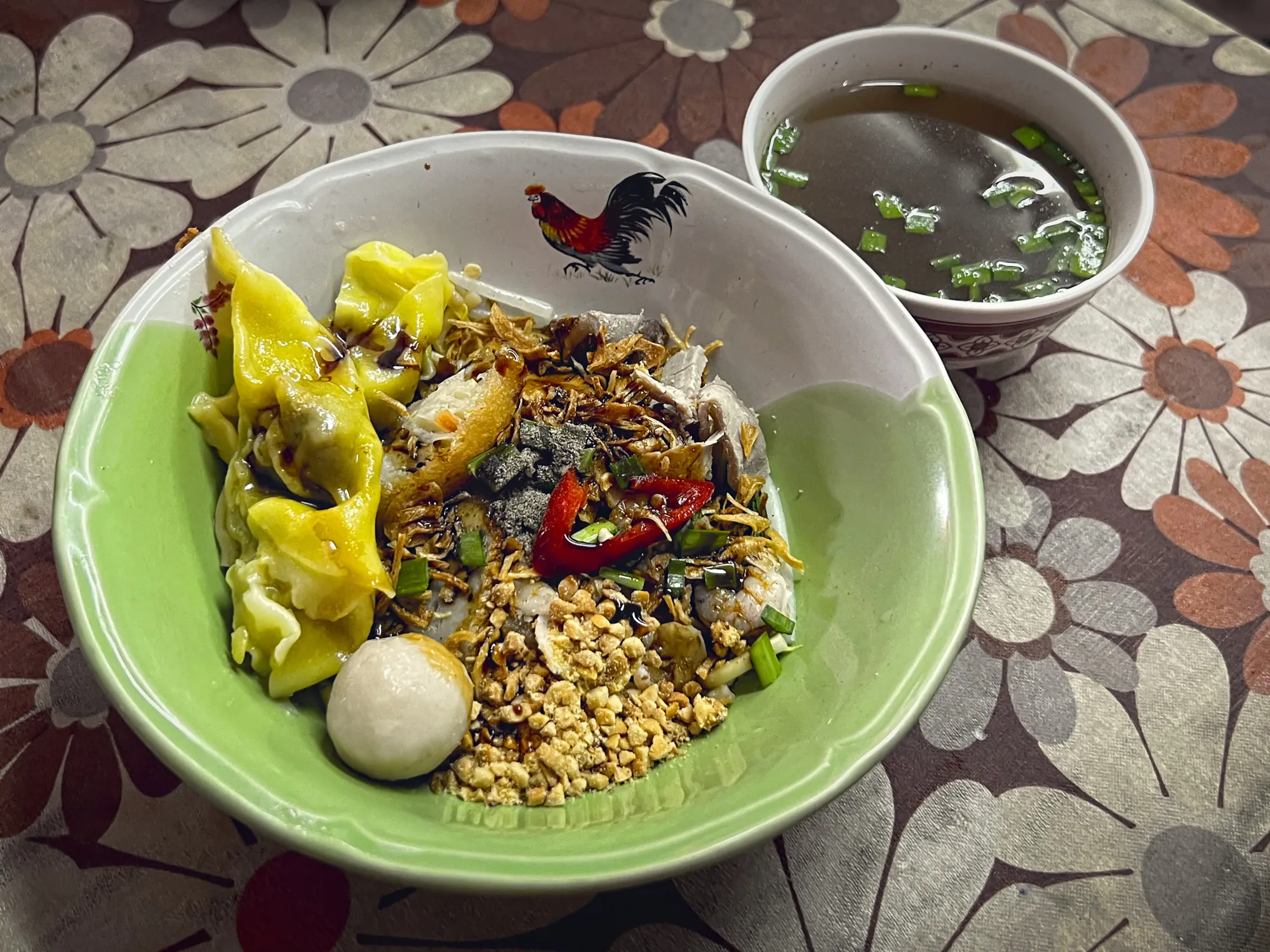
Mee Sapam is a popular Thai noodle dish made with Hokkien-style yellow egg noodles stir-fried with a variety of meats and vegetables. The dish is flavored with a combination of soy sauce, fish sauce, oyster sauce, and chili paste, which gives it a savory and slightly spicy taste.
Mee Sapam is believed to have originated in southern Thailand, where it is a common street food. It is often served with a side of fresh lime wedges and chopped peanuts, which adds a tangy and crunchy element to the dish.
Mee Sapam is a versatile dish that can be made with different meats and vegetables, making it a favorite among locals and tourists alike. It is a delicious and filling meal that is perfect for any time of the day.
Gaeng Tai Pla
Gaeng Tai Pla is a pungent and spicy southern Thai curry that is made with fish entrails and a variety of vegetables, such as eggplant and bamboo shoots. The curry is flavored with a paste made from fermented fish and shrimp, which gives it a distinct and strong aroma.
The origins of Gaeng Tai Pla can be traced back to the southern region of Thailand, where it is a traditional dish among the local communities. It is often served with steamed rice and a variety of fresh herbs, such as Thai basil and cilantro, which helps to balance out the strong flavors of the curry. While Gaeng Tai Pla may not be for everyone due to its pungent flavor, it remains a beloved dish among those who appreciate the bold and complex flavors of southern Thai cuisine.
Nam Prik Khai Pu
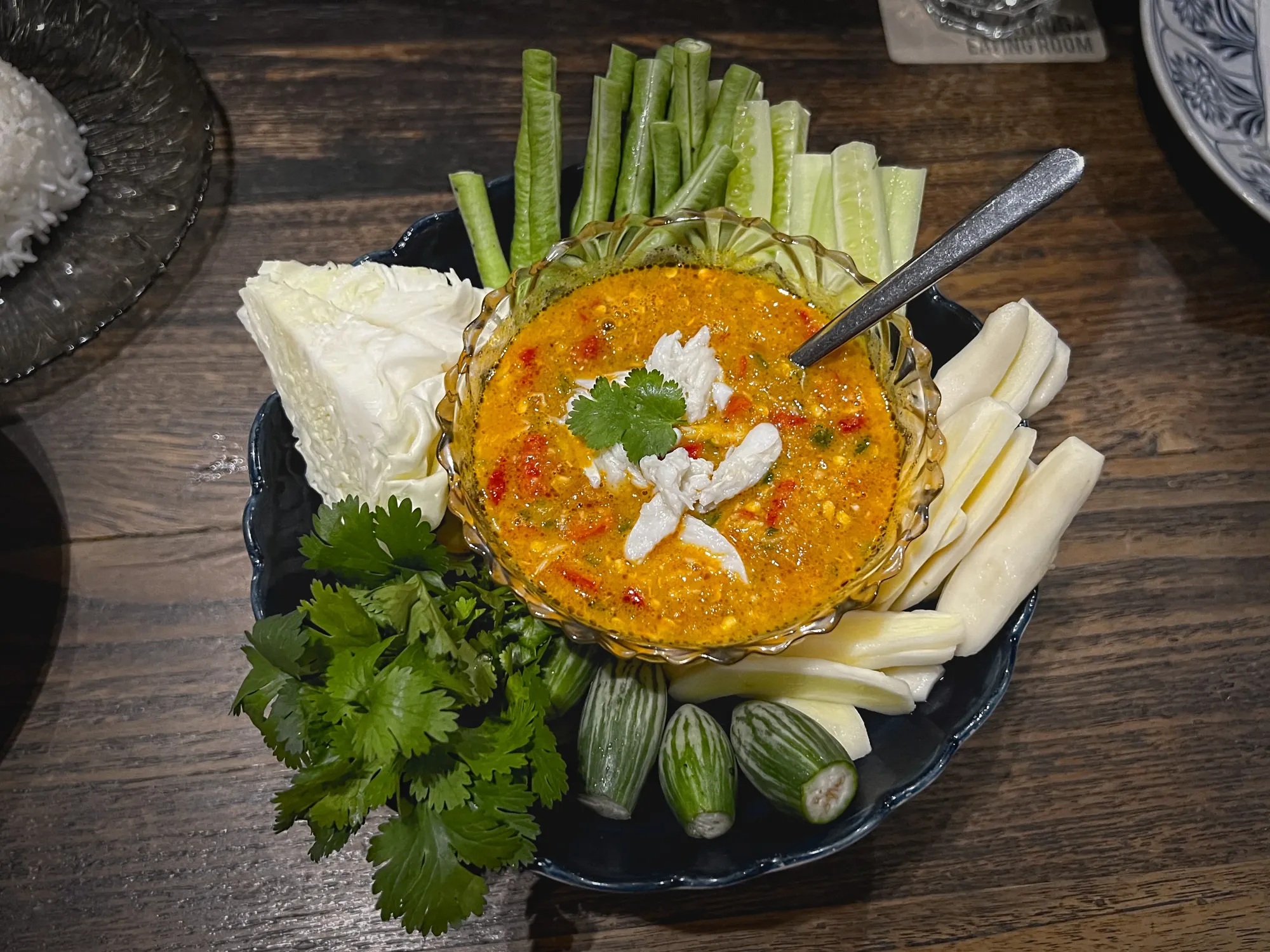
Nam Prik Khai Pu goes by many names, but in essence it is a spicy dip made from ground dried shrimp, chili peppers, and other seasonings, commonly served as a condiment with fresh vegetables and rice.
Gaeng sataw / Sataw Pad Kapi Goong
Gaeng Sataw is a spicy and aromatic Thai curry made with the stink bean, known as Sataw in Thai. The stink bean has a unique flavor and aroma that is loved by many Thais, and the curry is typically made with pork or shrimp and a variety of vegetables, such as eggplant and bamboo shoots.
The origins of Gaeng Sataw can be traced back to central and southern Thailand, where the stink bean is commonly found and used in cooking. The curry is often served with steamed rice and is popular among those who enjoy spicy and flavorful Thai cuisine. While the strong aroma of the stink bean can be an acquired taste, many Thais consider Gaeng Sataw to be a delicious and comforting dish.
Issan Food
Issan refers to the Northeast portion of Thailand that historically was Laotian, and carries a lot of Laotian culture to this day. The foods here are sometimes called by Thai names, but the underlying dish can be seen to translate directly from its Laotian ancestor.
- Som Tam – Papaya Salad
- Laab - Minced meat salad
- Nam Tok - Herby salad with grilled meats
- Jaew - Spicy dipping sauce
- Om – Delicious Curry of Northeastern Thai Cuisine
- Moo Yor – Isaan Steamed Meat Sausage
- Gaeng Nor Mai Bai Yanang – Isaan Fresh Bamboo Shoot Curry
- Moo Krata – Northeastern Thai Cuisine Skillet Barbecue
- Sai Grok Isaan – Fermented Sausage of Northeastern Thai Cuisine
- Pla Som – Fermented Fish of Northeastern Thai Cuisine
- Miang Kham – Isaan Leafy Treat
- Mu Ping – Northeastern Thai Cuisine Pork Barbecue
Please see the Laotian gastronomy article for more information on this unique sub-cuisine.
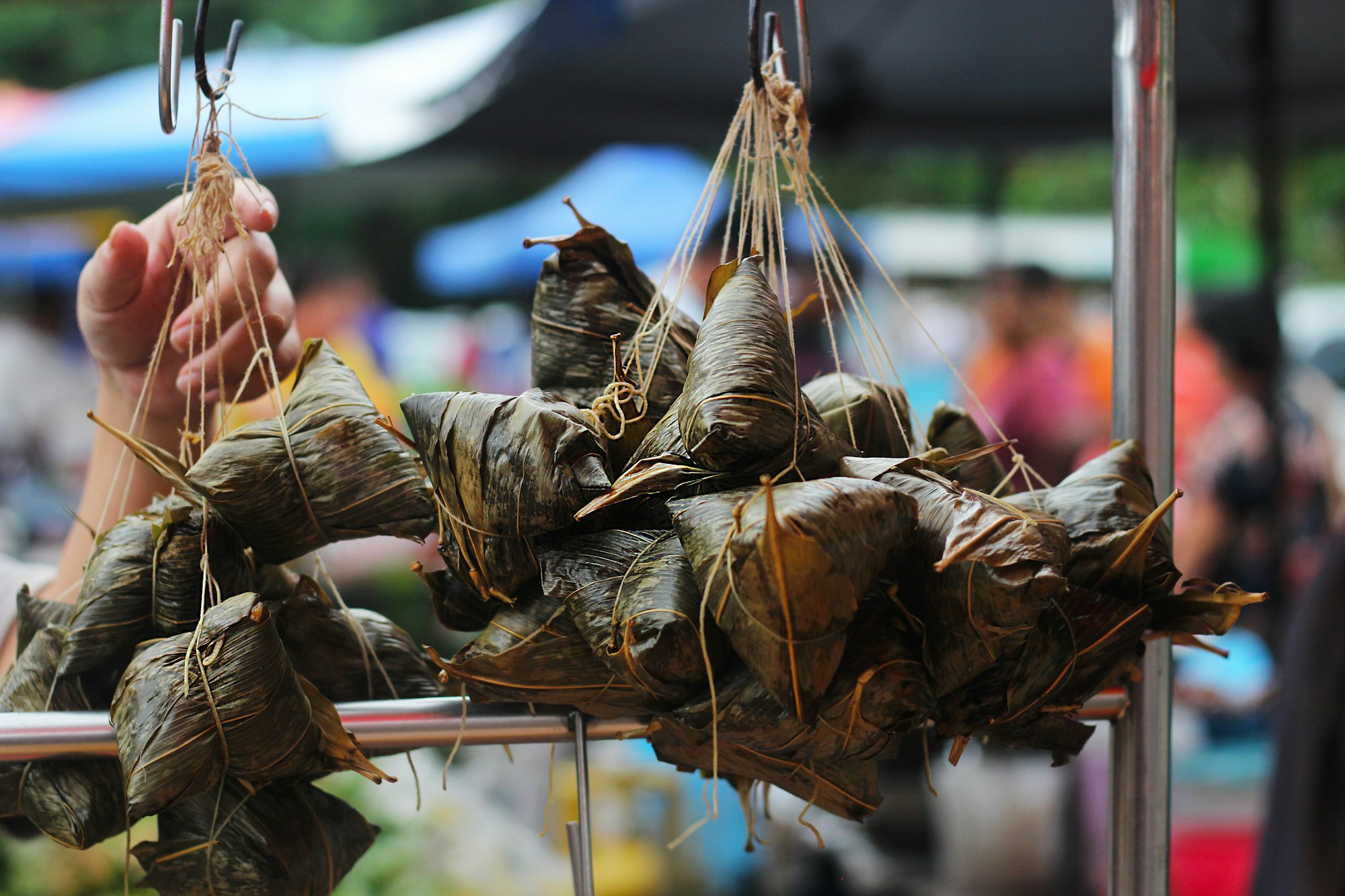
List of Other Things to Try:
- Kanom Jeen Nam Ngiew - A northern Thai dish made with cold rice noodles, tender pork, and a rich tomato-based broth flavored with a variety of spices, including ginger, garlic, and lemongrass. It is often served with fresh herbs and vegetables as a garnish.
- Gaeng Hung Lay - a northern Thai curry made with tender pork, ginger, turmeric, and tamarind paste. It has a rich, earthy flavor and is often served with sticky rice.
- Kai Jeaw Poo - a Thai omelette made with crab meat and a variety of herbs and spices, including garlic, chili, and fish sauce.
- Siew Boi - a Phuket street food dish that consists of steamed pork dumplings, rice noodles, and shrimp or minced pork wrapped in seaweed.
- Khanom Chin Nam Ya - a southern Thai dish made with fermented rice noodles in a spicy fish or crab curry.
- Krabong - a crunchy Thai snack made by coating strips of vegetables (such as pumpkin, onions, or banana blossoms) in a spicy paste and frying them.
- Khao Lam - a Thai dessert made by stuffing sticky rice, sugar, and coconut milk into a hollow bamboo joint and roasting it until the bamboo turns brown.
- Kuai-tiao Ruea - also known as boat noodle soup, is a beef noodle soup that originated in central Thailand and is traditionally served from boats on the canals of Bangkok.
- Kua Kling - also known as Gaeng Kua Kling, is a dry curry made with minced meat (usually pork or beef) and a variety of spices, including turmeric, cumin, and coriander. It is a spicy southern Thai dish.
- Khao Yam - also known as Khao Yam Nam Budu, is a southern Thai salad made with rice, fresh herbs, vegetables, and fish entrails, all tossed together with a fermented fish sauce called budu.
- Gaeng Leung Yod Maprao Pla - a southern Thai sour and spicy fish curry made with a coconut milk base and flavored with tamarind paste, lemongrass, and other spices.
- Gaeng Som Pla - A sour and spicy soup made with fish and flavored with tamarind, lemongrass, and other herbs and spices. It is a popular dish in Central Thailand, particularly in Bangkok.
- Yam Talay - A spicy and tangy seafood salad made with a variety of fresh seafood such as shrimp, squid, and mussels, tossed with herbs, lime juice, and chili peppers. It is a popular dish in Thailand and commonly found in coastal areas.
- Tam Pla Dook Foo - A crispy fried catfish served with a salad made from green mango, onions, and herbs, dressed with a spicy and sour sauce. It is a popular dish in Northeastern Thailand.
- Pad Phuk Tong - A stir-fry dish made with pumpkin, vegetables, and meat, such as chicken or pork, seasoned with a mixture of soy sauce, oyster sauce, and sugar. It is a common dish in Thai cuisine.
- Tom Som Pla Krabok - A very sour and spicy fish soup made with pla krabok (a type of freshwater fish), tamarind, and other herbs and spices. It is a popular dish in Northern Thailand.
- Goong Pad Makham - A stir-fry dish made with shrimp, vegetables, and a sweet and sour tamarind sauce, flavored with garlic and chili peppers. It is a popular dish in Thai cuisine.
- Tod Mun Pla - A fried fish cake made with minced fish, curry paste, and herbs, served with a sweet and tangy dipping sauce. It is a popular snack or appetizer in Thailand.
- Gai Tod - Deep-fried chicken served with sweet chili sauce, it is a popular Thai street food.
- Khao Sah Park - A popular street food in Thailand, it is a grilled or fried fish seasoned with salt and served with a spicy dipping sauce or as part of a rice meal with various toppings.
- Pad Mee Phuket - A stir-fry noodle dish made with thin rice noodles, seafood, vegetables, and soy sauce, commonly found in the Phuket province of Thailand. It is a popular dish among locals and tourists.
Resources
Restaurant Recommendations
There are many restaurants in Thailand that could be recommended. Bangkok has some of the best restaurants in the world, for extremely reasonable prices. Here I briefly recommend a few standouts in groups, but when in Bangkok the entire culinary world is truly at your fingertips.
Firstly, some of Bangkok's most famous restaurants. Here I will call out Jay Fai, the Michelin star street food restaurant named after its namesake chef. Jay Fai is incredibly famous and deservedly so. The dishes here are a bit pricy for Thai standards, but also are large portion sizes and absolutely incredible. Additionally, Bangkok has a few of Asia's 50 Best Restaurants. We loved Le Du, and can confirm it is a wonderful deal with great flavors.
Secondly, the debate of the greatest Pad Thai in the world. I am not here to definitely weigh-in on that issue, but I will report that the classic favorite Thipsamai is all that and a bag of chips, and an absolute must-visit while in Bangkok. Additionally, the new kid on the block, Pad Thai Fai Ta Lu, is also amazing. I personally liked the Pad Thai style of Pad Thai Fai Ta Lu more, but I would highly recommend both.
Finally, some other restaurants outside of Bangkok that stood out as solid recommendations. In the surrounding Phuket area: Tu Kab Khao for its variety and southern Thai dish quality, No. 6 Restaurant for high value and delicious meals, and Ko Yoon Phuket Noodle for its authentic hole-in-the-wall Thai food. On the other end of the country, Kao Soy Nimman in Chiang Mai is one of the many restaurants in the city that gives good variety and impressive service for Northern Thai cuisine.
To see an extensive list of restaurant recommendations in Thailand, check out the Restaurants page to see a map of our top recommendations for Asia as well as the database with details on restaurants from all around the world.





